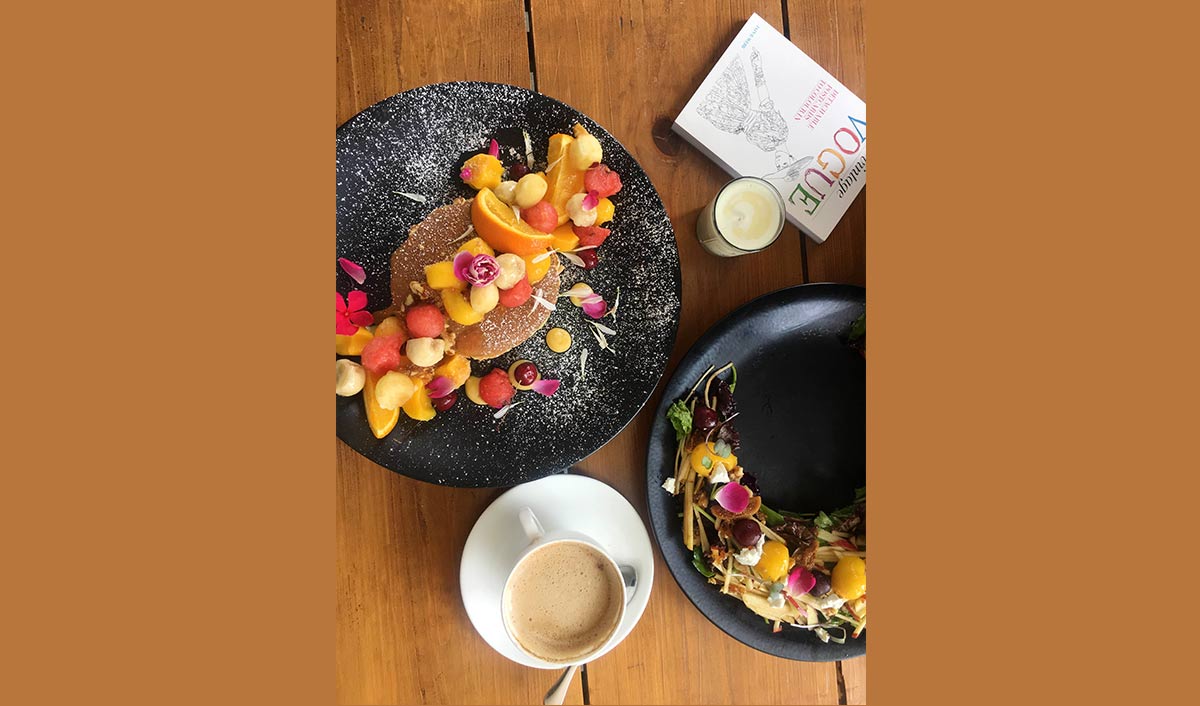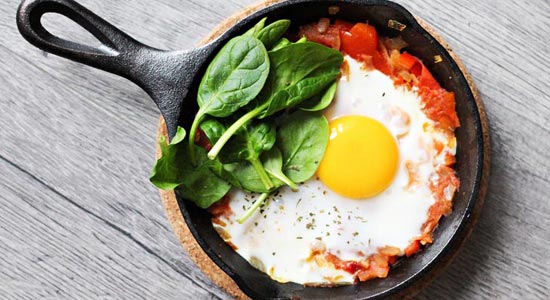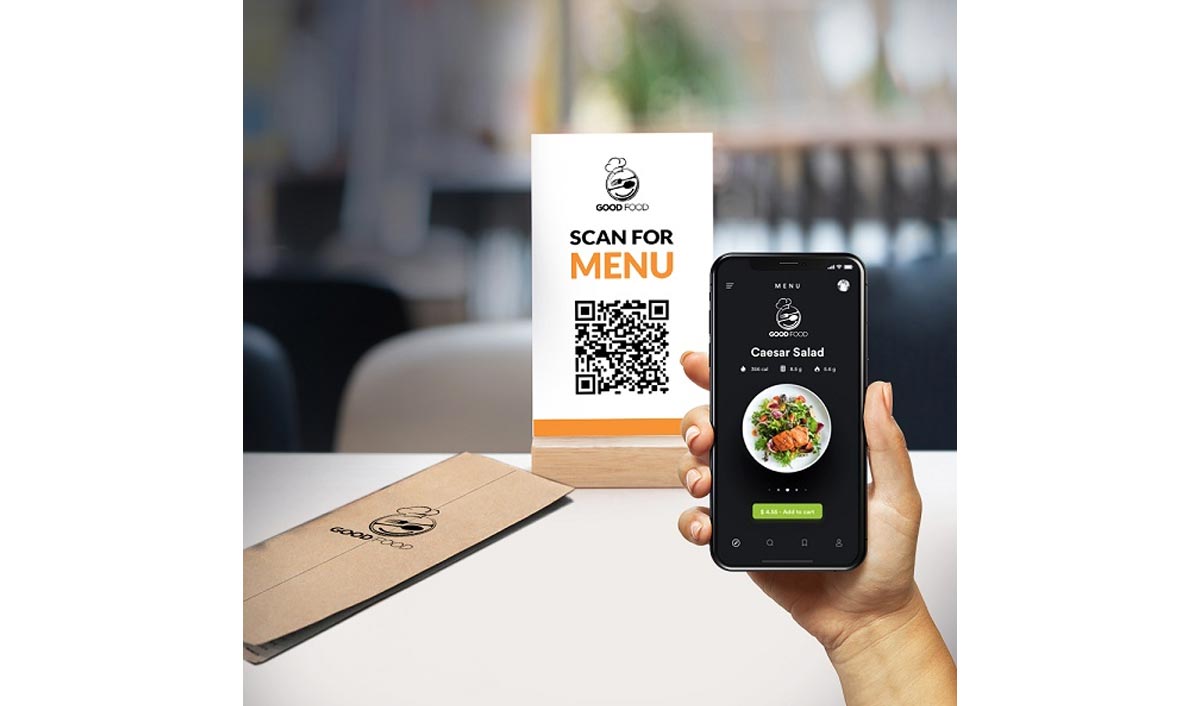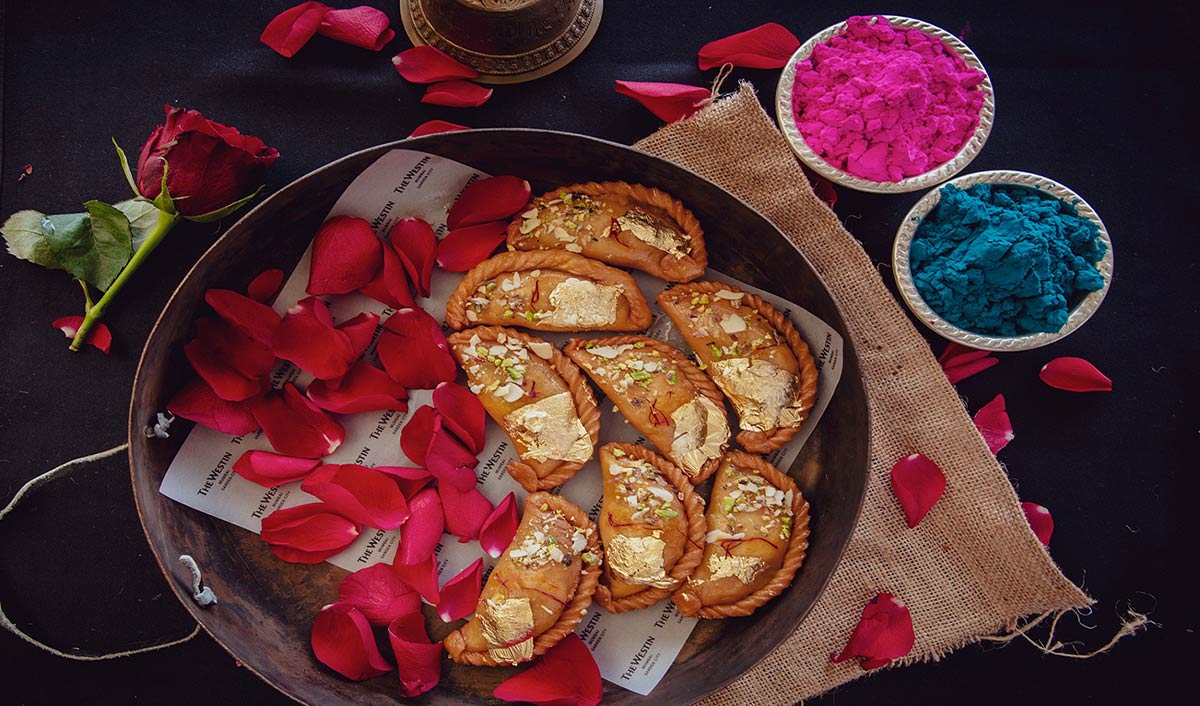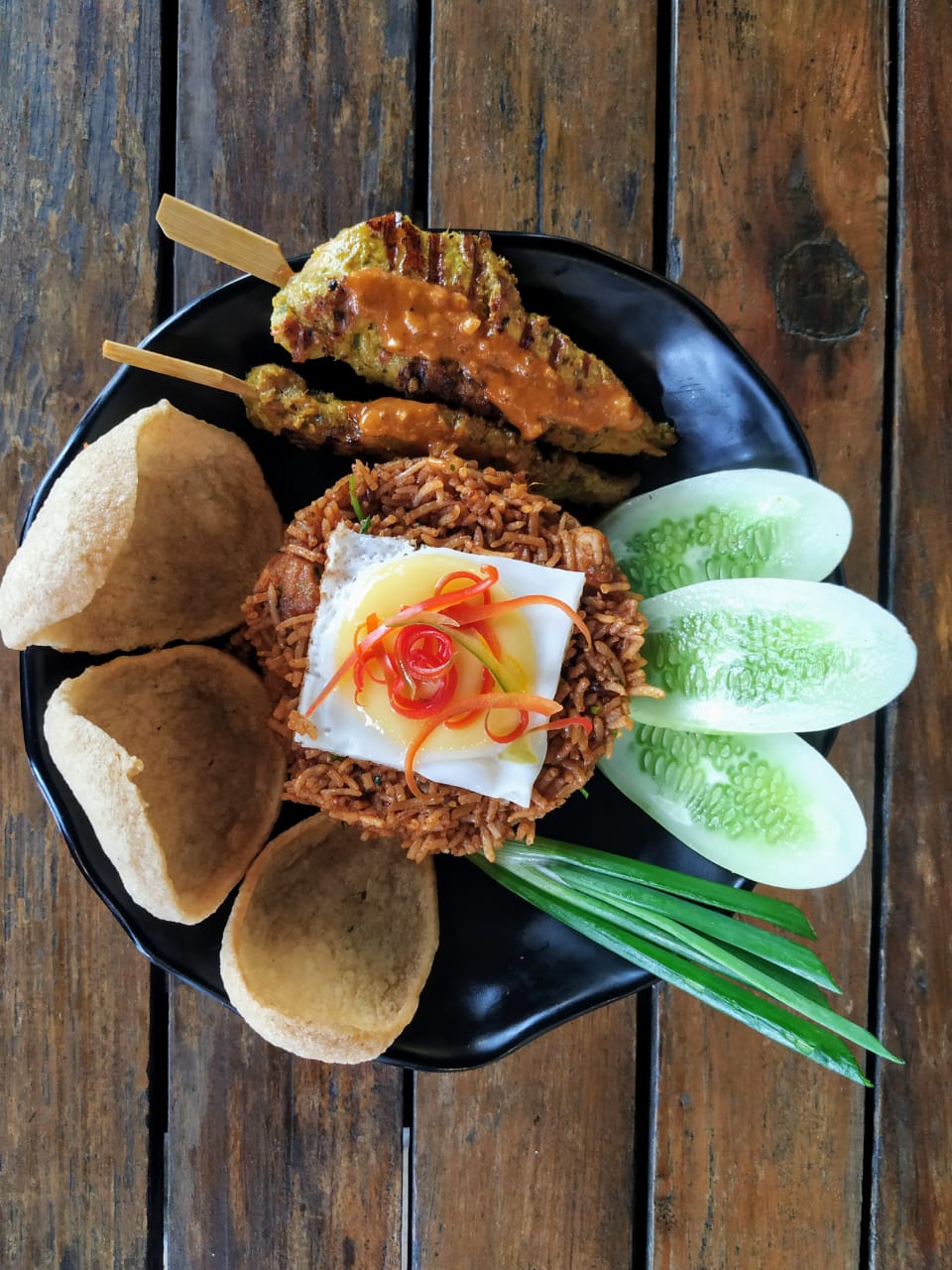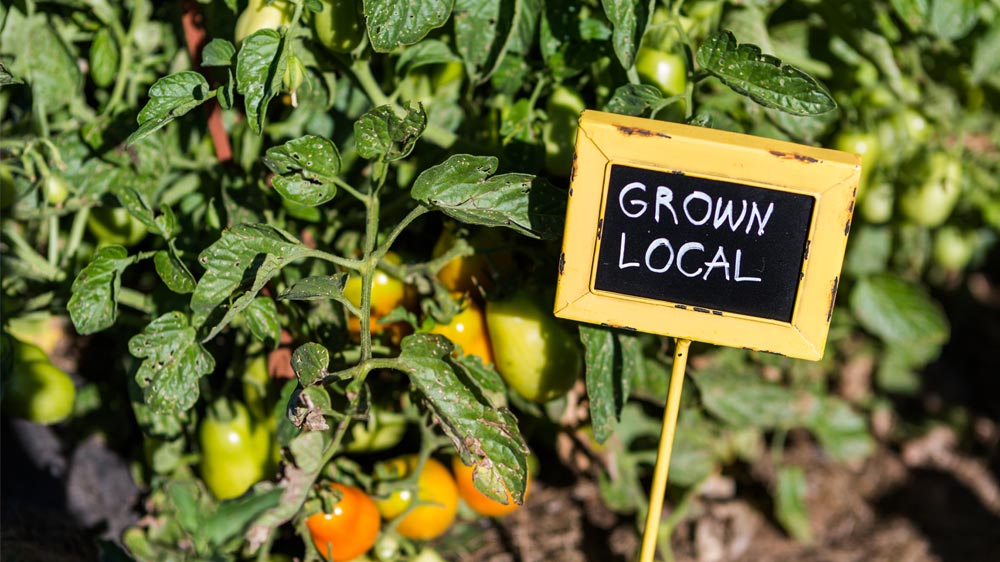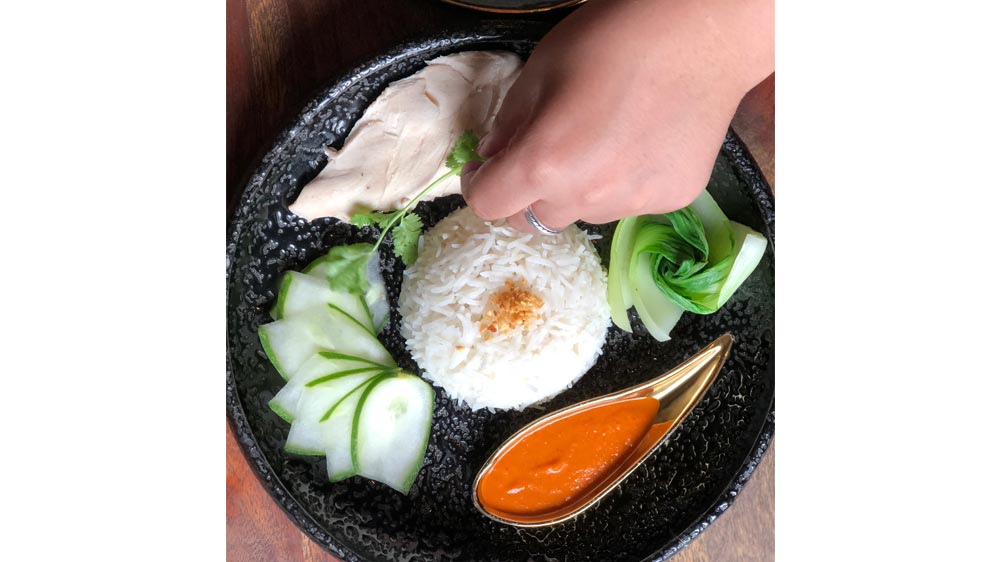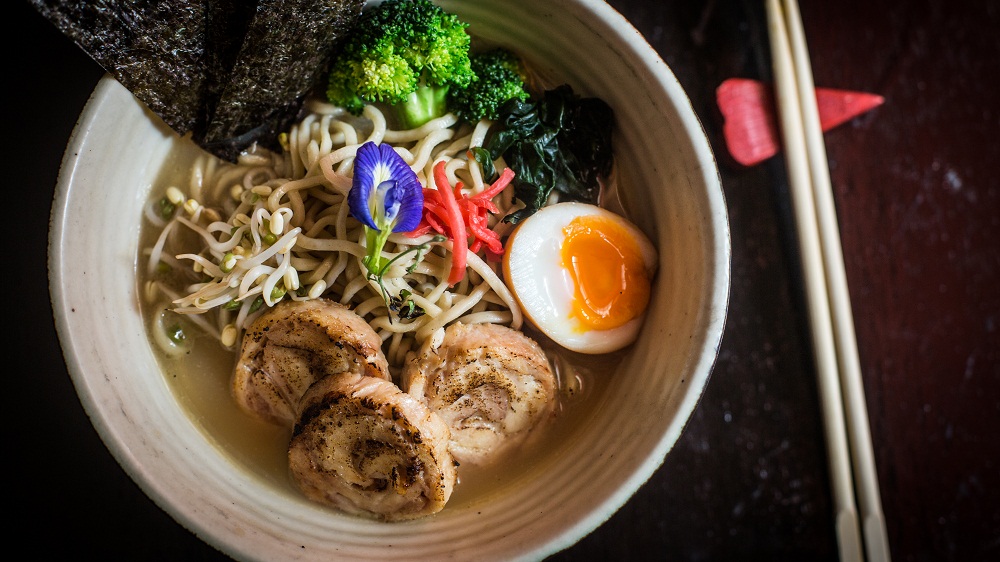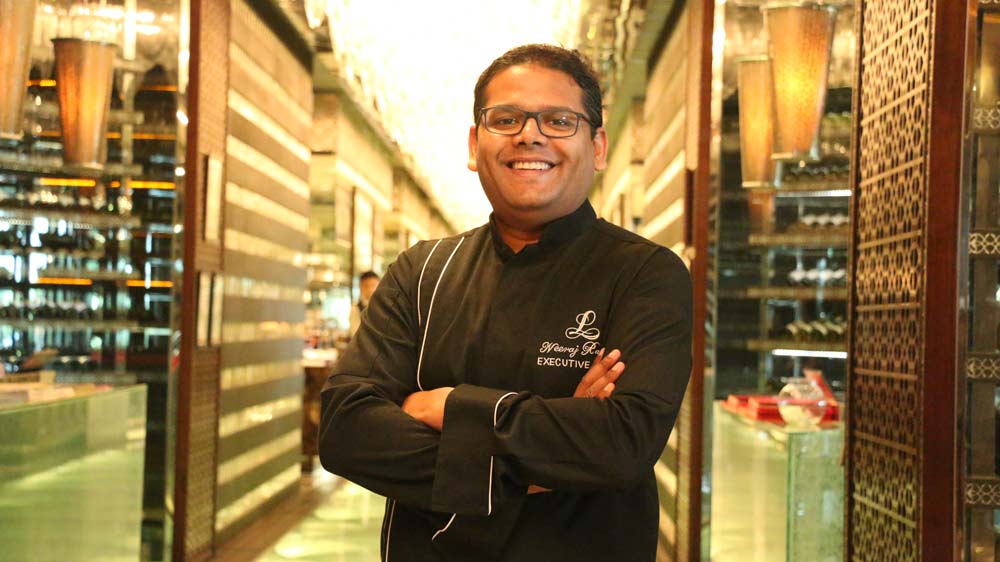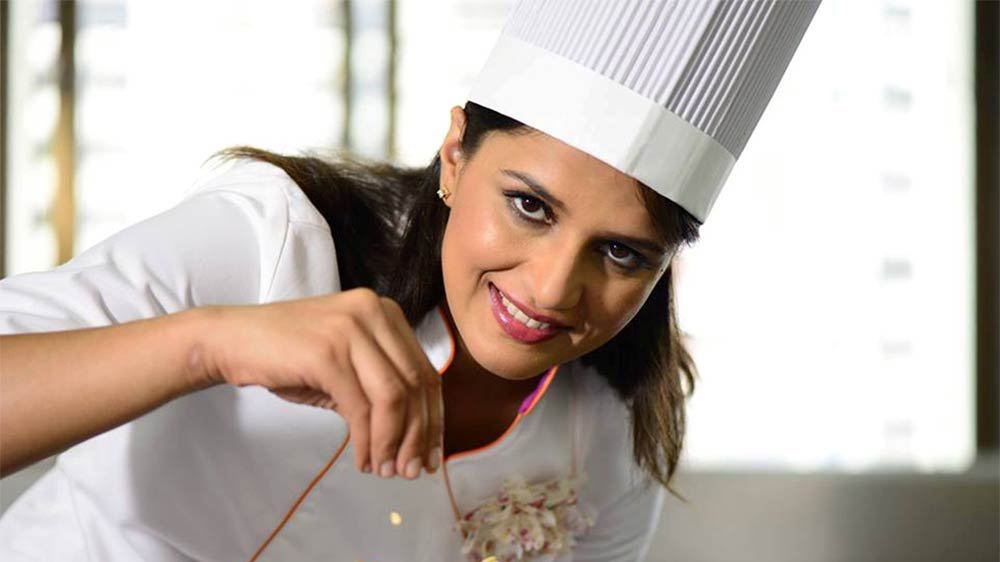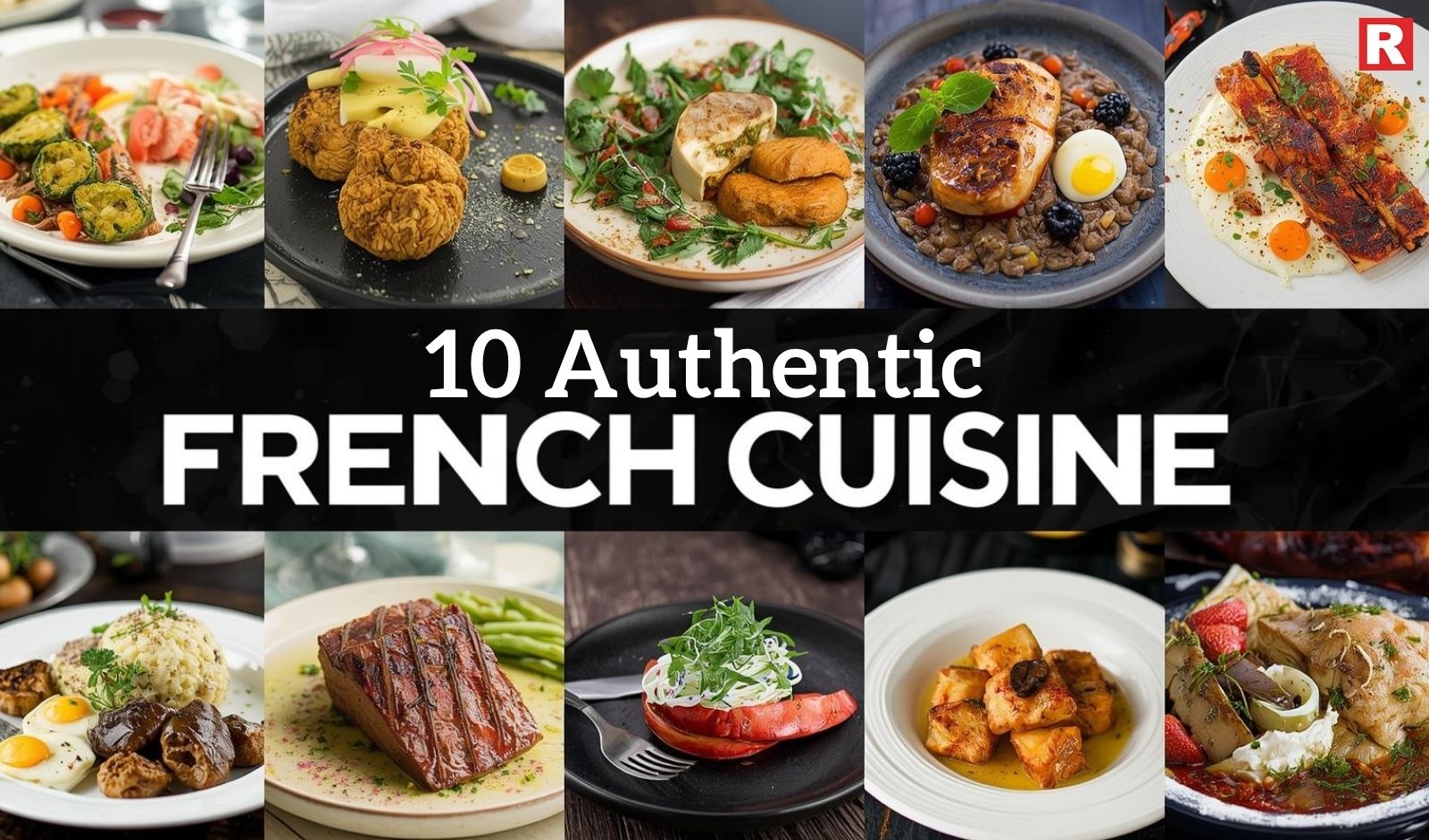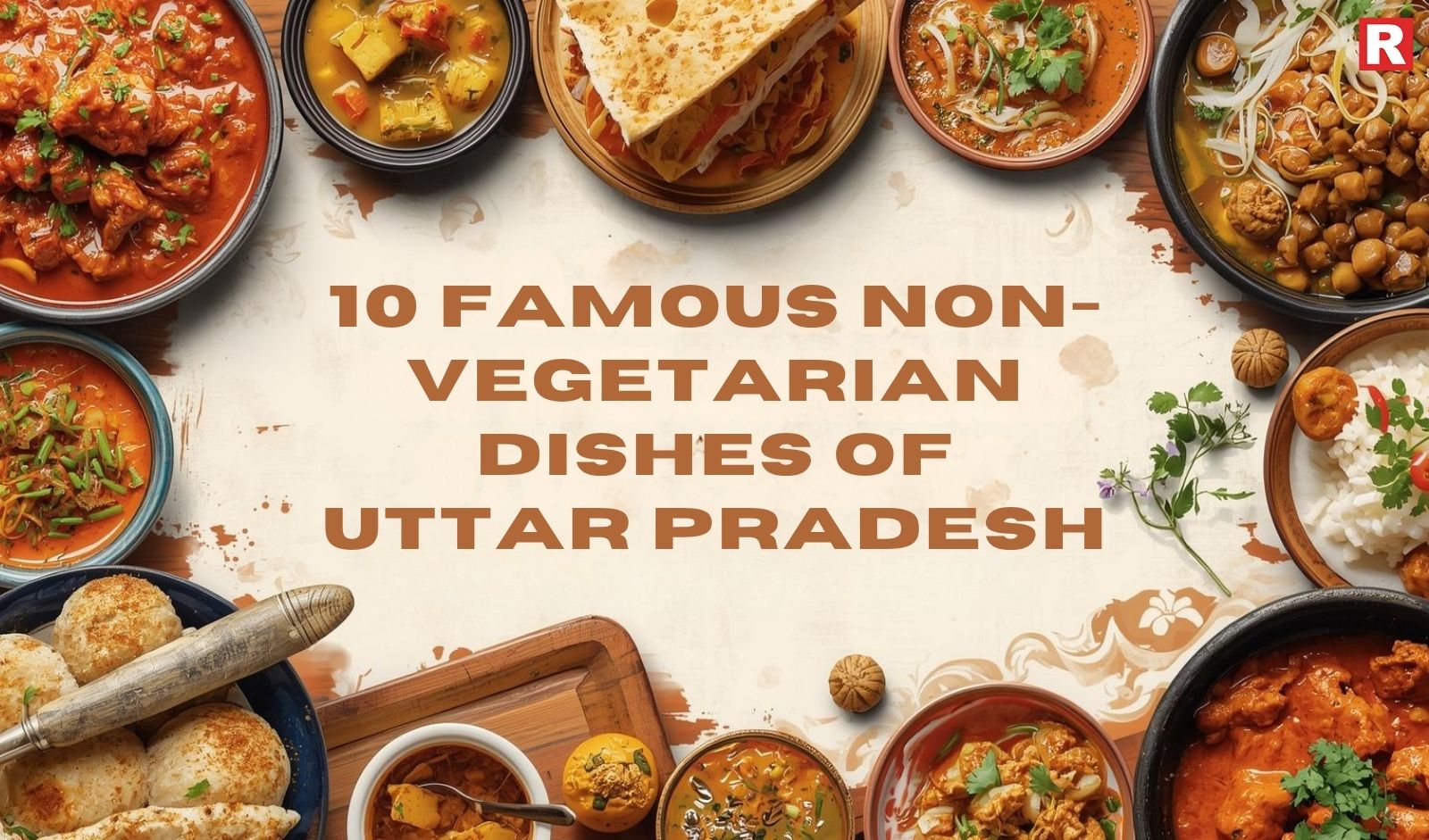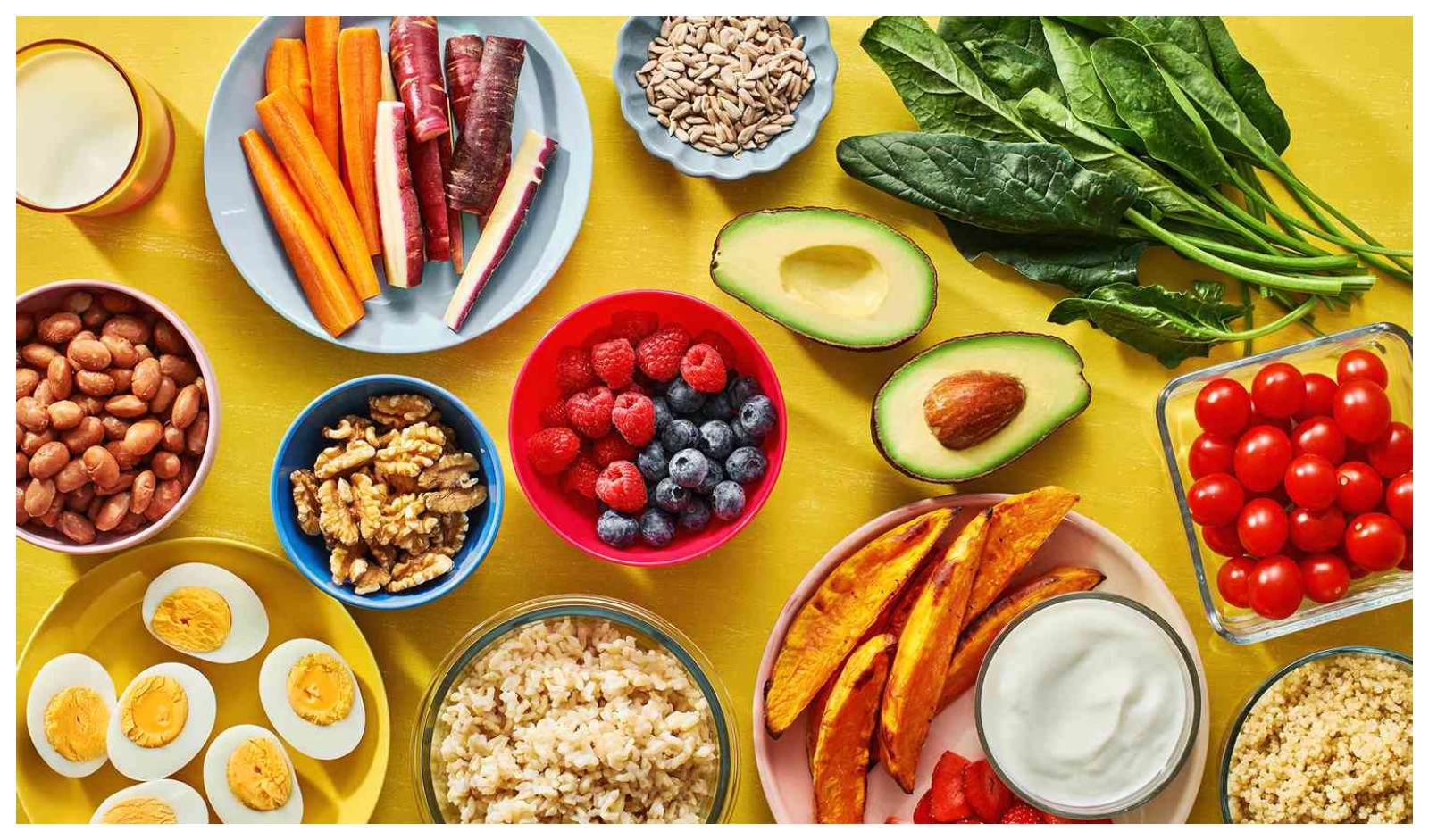
Holding a physical printed menu at a restaurant of splendid opulence often put us in a befuddled state of mind. The fear of getting a wrong order engulfs us and hence most of the time we are not clear about the things that we are going to order.
“Currently, what happens in the food space is that everyone is shooting in the dark. If you see how people are navigating through menu, it’s illogical. From the very basic to the most complicated food item, restaurants have to show what they are serving. Therefore, there is a need for consumers to get the informed choices,” Gunjan Mehrish, one of the co-founders of Dash.menu said.
Dash.menu is a part of the food tech startup called Idea Chakki Pvt Ltd, which was founded by three former senior NDTV journalists, Monica Narula, Gunjan Mehrish, and Noopur Tiwari to provide an app that lets consumers experience their meal before they place their order.
Through its small 15-second “fideos” (food videos), this app shows what the dishes on the table are going to be like. Along with that, it also lets consumers see the size of potion and what all ingredients have been used to make it.
“There are formats to eating. I keep saying to people when they order sushi or anything, they don’t know what to do with the flowers and leaves on their plates or if they are supposed to eat it or not. Or for that matter people often say that wine and cheese is brilliant. I can bet my life on it that most people don’t know how you are supposed to drink that wine and what cheese goes with what because it’s an extremely evolved thing. There is that awkwardness and this menu takes away the awkwardness from a basic need to a very fancy need,” Gunjan said.
Whether it is Kabaq (which enables users to see virtual 3D food on their table, when in a restaurant or ordering online) or SP Robotics (wherein a robot serves the order once it is placed at the counter), food tech companies and startups are coming on board to provide solutions to the restaurants across the country.
“There are lots of restaurants who are providing iPads in the restaurants but they will have still photographs. Somebody will give you 2 or 3 videos but nobody will give you 85% of the menu in a video format,” Mehrish said.
Marriott, Le Meridien, Mamagoto, ITC Hotels, Taj Hotels, restaurateur Ritu Dalmia, Dragonfly, Gajalee, Pluck, Depot48, and House of Nomad are some of the clients of Dash.Menu. “We have 40-50 restaurants right now and there is a range of places we are in. We are also going to approach smaller categories of restaurants,” he said.
The road ahead for Dash.menu is to go international and to smaller cities. Right now Dash is predominantly in Delhi and Bombay but it is planning to enter into smaller cities like Chandigarh, Jaipur and Indore.

As Christmas is right around the corner; the restaurants, cafes and beverage sector are using a variety of tactics in order to maximize operations during this time of year and improve the festive experience for customers. Festive décor, atmosphere, seasonal cuisines, themed events, personnel, operational events, community involvement, and promotions are some of the most important preparations.
Let’s have a look at these few places and their offering for the big day:
The Leela Bhartiya City, Bengaluru: Start your day with the unique Breakfast with Santa at The Leela Bhartiya City’s ‘The Quattro’. This beautiful morning promises limitless fun for kids and treasured moments for families, all set against the backdrop of upbeat tunes and a festive atmosphere. Enjoy a festive feast for everyone with a carefully chosen menu that includes holiday favorites like roast turkey and minced pies.
Crackle, Bengaluru: Crackle Bengaluru, the city’s first solo Omakase-style restaurant, invites diners to experience Skall n Saga, a special seasonal event from 20th December through the first week of January 2025. Known for its constantly changing menu, Crackle's special Christmas menu pays homage to Nordic customs, which are emblematic of thankfulness and reverence for the gods.
With a variety of delicious meats and seafood, such as tender turkey, rich and marbled ribeye steaks, and bold shark fish, the Christmas menu delivers a sumptuous celebration of flavors. While Exotic Black Fowl, rich Duck and Goose, and juicy Pigling add warmth and luxury to the meal, briny oysters and mussels help diners feel closer to the sea.
Third Wave Coffee (across all outlets): By brewing up more than just coffee, Third Wave Coffee, the coffee-first QSR brand, is adding a little more holiday magic. The firm is embracing the holiday spirit with a splash of playful intrigue and festive happiness by surprising its consumers with gifts through its charming "Secret Santa" campaign from December 19 to December 24.
Paul John Indian Single Malt Whisky: Indulge yourself by sipping the Paul John Indian Single Malt Whisky, the pride of the tropical shores of Goa, which has launched their 7th edition of its highly anticipated Christmas Limited Edition Series. Rich in fruit tart and salted toffee, the 7th edition is distinguished by its deep golden hue, exotic scents of mango and pineapple, and flavors of coconut, candied orange, and toasted oak on the palate. In addition to international markets like the USA, Canada, Bulgaria, Belgium, Netherlands, Poland, Germany, UK, Ukraine, and France, there are only 6,600 bottles available for domestic markets like Karnataka, Goa, Maharashtra, and Haryana. The brand's heritage of producing unique, valuable whiskies that honor the spirit of the season is carried on with this most recent release.
Scuzo Ice 'O' Magic: Treat yourself with some desserts in this holiday season as Scuzo Ice 'O' Magic has unveiled their eagerly anticipated Christmas special Gelato. Scuzo Ice 'O' Magic is a pioneer in creating delicious frozen treats.
A Christmas present: the rich, spicy taste of plum cake with an international treat: gelato to enjoy on another day. No artificial coloring, preservatives, or hazardous substances are present in Scuzo's Plum Cake Gelato. This Christmas treat is made with the best ingredients and features natural hues.
Gaylord, Churchgate: If nostalgia had a taste, it would be similar to Gaylord's Christmas hampers. A rich plum cake, melt-in-your-mouth rock chocolates, chocolate chip cookies, gourmet bread, and more are all included in their Big Hamper Box, which starts at ₹2,000 and celebrates seasonal favorites. The Small Square Box (₹1,600) offers the same festive charm in a smaller size for those looking for a more portable choice.
J.OBEROI Sweets: Indian confectionaries have been known for their varied flavors. J. Oberoi's confections, which are well-known for their lavish wedding baskets and custom creations, have evolved to include innovative touches like edible gems, fusion flavors, and sophisticated designs that appeal to the modern palate while respecting tradition. Celestial Indigo, Gilded Macadamia Symphony, and Pista Badam Loch are in their Christmas lineup.
One8 Commune, Mumbai: As one8 Commune changes into the famous Hogwarts from your beloved Harry Potter wizarding stories, enter a fantastic world. A thrilling selection of events is planned for December 24 and 25, which will undoubtedly make your Christmas special. The festivities begin with a quaint Christmas Flea Market that offers delectable foods like roasted almonds, handcrafted cookies, and juicy apples that are ideal for giving or savoring.
Begin your gastronomic adventure with mouthwatering appetizers like as babaganoush, cold cut platter, and cheese platter. Savor meals like Edamame Rice, Murgh Bhuna Boti, and Poulet Chasseure for the main portion. Savor divine desserts such as Red Velvet Cheesecake, Mini Fruit Tarts, Strawberry Cheesecake, and a live chocolate fountain, which will guarantee a delightful conclusion to an absolutely remarkable event.

Differentiation is the Key
No matter how successful your model or restaurant is, you need to have an ‘X’ factor to lure customers; whether it is through F&B, service or the product. “I think the restaurateurs have started looking at segmenting a market by different needs. We see a section of customers who want to eat different thing at different point of time. Like somebody would want to eat healthy food during the weekdays, but will indulge into a not so healthy food over the weekend. They want a new experience every time they venture out. And, hence restaurant owners are innovating and merging things; whether it's coffee chain merging with beer chain and stuff like that. So, we see that innovation is happening in the market,” shared Ramit Goyal, National Head, Hyperpure by Zomato.
Localization is the Key
Restaurant menu localization is a practice that help restaurants attract diners from diverse cultures and languages. It allows them to personalize their services and products for targeted customers. For eg; Global chains like McDonald’s, Domino’s has become a leader in India by localizing their menu and food products as per the customer and region.
“We have been importing lots of ingredients and food items though India is a country that has its own home-grown products and ingredients and lately we at restaurants have realized the same and have started using those ingredients in our menu,” mentioned Chef Saravanan Ranganathan, Executive Chef, Westin Chennai.
Service at the Forefront
Good customer service is important in the restaurant industry because it can determine the overall success of a business as happy customers generate positive feedback and increase in the revenue and hence we can say that the longevity of business relies on the service.
“I want to tell restaurant owners and chef that before you come to your restaurants on a daily basis, first ask yourself, why should the customer come to your restaurants and not go to the other restaurants? Ask these question 365 day, you get all the answers and the, the why guest will come to your restaurants and not go to x, y, z restaurants. That's number one. Number two is that it's important that keep an eye. There are certain chefs who create the menus and it thinks that it should be a successful menu, but until it doesn't get a success, we have to keep an eye on the customer. And to keep an eye on the customer, you have to have a great service team. You have to have a great service team who will constantly give you the feedback. It's very important for your menu making,” pointed Chef Sujan Mukherjee, Executive Chef – Food Production, Taj Coromandel- Chennai.
Innovate & Learn
“We are Indians, we are deep rooted in what we do, but we are willing to experiment a bit. Now we are changing, we are looking at fusion foods. Maybe not now, but we are looking at Subway Samosa, maybe with technology coming in we are trying to mix different things. So, we have to retain what we have because that's the core flavor that we, but we can explore something new,” added Sanandan Sudhir of On2Cook.

Swiggy, India's leading on-demand convenience platform, aims to enhance the restaurant experience and offerings with the introduction of its 'Menu Score Tool.'
This powerful, data-driven dashboard empowers restaurant partners with invaluable insights and recommendations for menu optimization.
“The Swiggy Menu Score Tool showcases our commitment to providing data-driven solutions and actionable insights for our restaurant partners. As the restaurant industry increasingly expands into the online realm, understanding what works in this digital space becomes paramount. Consumer behaviours online can differ significantly from offline experiences. We believe the Menu Score Tool will bring a positive impact on the way restaurants approach menu optimization, enabling them to attract more customers and fostering organic business growth,” shared Swapnil Bajpai, VP, Supply, Swiggy.
In today's competitive restaurant landscape, a well-crafted menu plays a pivotal role in driving success. Swiggy's Menu Score Tool is poised to shape the future of menu design and customer engagement.
Customer at the Centre
The Menu Score Tool utilizes cutting-edge data analytics to create a user-friendly dashboard that harnesses the power of competition analysis and customer preferences. Covering crucial aspects such as menu categories, dishes, images, add-ons, and combos, this innovative tool equips restaurant partners with actionable recommendations to elevate their menus and drive better conversions.

Helping Restaurant Partners
The Menu Score Tool offers a comprehensive view of menu performance, providing partners with a score on a scale of 100 at both the brand and individual outlet levels. This unique scoring system is a measure of overall menu quality and serves as a benchmark for improvement. Partners gain access to key metrics such as Menu to Cart conversion percentages, enabling them to make informed decisions and drive menu-related enhancements. The tool also provides information on the Menu Scores of nearby restaurants, helping users gauge their competition and identify areas for improvement.
The dashboard presents detailed insights at a granular level, enabling partners to identify top-performing dishes preferred by customers in similar restaurants, pinpoint items lacking images and descriptions, and uncover the most sought-after add-ons and combos.
The Menu Score Tool also empowers restaurant partners with the freedom to access data points at any time, reducing dependence on direct Swiggy point-of-contact. With the tool's self-serve format, partners can take charge of their menu optimization journey and embrace data-driven decisions that translate to increased menu conversions and sustainable growth.

In the realm of fancy restaurants in India, the environment often takes a backseat when it comes to menu planning. They proudly serve Norwegian salmon (or claim to), Chilean sea bass, imported cured meats from the Mediterranean, and frozen exotic vegetables. Meanwhile, across the globe, restaurants are working on reducing their carbon footprint, aiming to tread lightly on the planet.
Even the prestigious Michelin Guide has been awarding "green stars" to eco-friendly restaurants since 2020, highlighting their use of local and seasonal ingredients. However, smaller restaurants in India have long understood the importance of resourcefulness. They stick to limited menus and seasonal produce that caters to their communities. While this approach may not align with modern culinary trends or maximize profits, city restaurants striving to be environmentally conscious have found their own path. Some chefs champion local ingredients, minimize waste, and aim to offer memorable dining experiences without compromising on quality.
Upon inaugurating her establishment, Fig & Maple, in 2016, Radhika Khandelwal, the chef and proprietor, adopted a meticulous approach to minimize food waste. At the close of each day, she would measure the discarded food to identify further opportunities for achieving a zero-waste kitchen.
Presently, both the Delhi and Goa branches of the restaurant showcase culinary creations that ingeniously incorporate elements of produce that many consider inedible. In Delhi, the best-selling item is a delectable assortment of chips crafted from the peels of root vegetables. Meanwhile, the Goa menu boasts khandvi prawns accompanied by a sumptuous bisque derived from the shells of these very crustaceans.
Harsh Sonthalia owner of Soba Sassy expressed that fine dining establishments are now actively promoting sustainability by minimizing waste, championing local ingredients, and serving seasonal dishes.
“They employ strategies like portion control, nose-to-tail cooking, and recycling programs to reduce waste. By sourcing ingredients locally, these restaurants support local farmers, reduce transportation carbon footprint, and ensure freshness. They also design menus that showcase seasonal ingredients, offering the best flavors while minimizing the environmental impact of long-distance transportation,” he added.
The world is seeing a resurgence in all sectors post covid and restaurant industry is one of those sectors. With the growth story of India there has to be a natural growth of the F&B industry of the country. Praveen Jaiswal, owner of Yeti feels that f&b outlets are well aware of the multiple benefits of depending on local produce which is cost effective aswell. “With the change in seasons we have that opportunity to freshen up our menu as well. For instance, Mango in the summer time or Hilsa fish in Kolkata once the monsoon hits. There are numerous benefits to this approach and not a single down side,” he pointed.
Fine dining establishments are also advocating sustainability by adopting various practices to minimize waste. Chefs are becoming increasingly creative in utilizing all parts of an ingredient, from root to stem, to reduce food waste. They find innovative ways to incorporate vegetable scraps, meat trimmings, and other leftovers into their dishes, minimizing waste while adding unique and exciting elements to the culinary experience. Additionally, fine dining restaurants are exploring eco-friendly packaging options, implementing recycling and composting systems, and reducing energy consumption to further reduce their environmental impact.
Nikhil Chawla, partner at Poach shared, “As more fine dining establishments embrace sustainability, we can savor exquisite meals guilt-free, knowing that our indulgence is in harmony with the health of our planet.”
The fine dining scene in India is undergoing a shift towards sustainability. Restaurants are prioritizing local ingredients, minimizing waste, and creating menus that showcase seasonal flavors. This commitment to sustainability not only benefits the environment but also supports local farmers and enhances the overall dining experience. It's an exciting time as India's fine dining industry embraces responsible practices and creates a more environmentally conscious culinary landscape.

Culinary Director, Novotel Mumbai Juhu Beach May 01, 2023 / 8 MIN READ
With an effort to keep up with the ever-evolving trends, it becomes a necessity for restaurateurs to adapt to them as well. This involves changing the menu to suit the current taste and preferences, the interior decor of the restaurant, including the kitchen, or even taking to certain cafe trends such as housing board games and offering the space for events such as open mics, trivia nights, or social dancing nights.
But the most important change that customers seek is of the menu. Everyone wants their taste buds satisfied, but not everyone has the same taste palate. So it becomes imperative for the menu to consist of a variety of cuisines and diet preferences. Especially in the case of 5 star hotels, whose reputations precede their name. So, below are some of the key trends being followed in the year 2023:
Menu Design: More often than not, restaurateurs do not realise that the best menu is the one kept simple. The more focus given on the dishes and their descriptions, the easier the readability and hence the faster it is to make a choice. This is also why only plain and simple fonts should be used, and the menu template should be kept minimal.
Understand Consumer Psychology: It will be interesting for you to know that contradictory to how we generally read, i.e. from left to right, menu readers tend to first concentrate their attention to the middle parts of the page, before moving on to the other sides. This is known as “The Golden Triangle.” So our takeaway from this should be to place the most important dishes in the middle, and the rest on the top and bottom.
Spotlight menu items with sketches: Although the aforementioned point stated that the menu should be kept simple, a few sketches will only add to the minimalist nature of the menu. This isn’t to say that you can add them to your liberty as you please, but using it in place of pictures, and only a few spread neatly throughout the menu, is a good idea. This could be done for a number of reasons, for example, if you do not have appetising pictures of your food and/or prefer to keep it subtle.
Don’t shy away from using colours: It has been psychologically proven that certain colours tend to trigger and elicit certain responses in human beings. For example, red is known to remind the readers of meat, while people associate blue with water, thus making them hungry and thirsty respectively. So instead of just being playful with the menu colours, play smart.
Follow Food Trends: Food trends are ever-changing and the menu should always be adept to them. Ensuring you’re at par with your competitors, while your market research is up to date will really make you stand out. Lebanese and Asian food have gained momentum of late and how. While including dishes from these cuisines, also remember to stock up on seasonal fruits to use in inventive and progressive dishes, to entice consumers. Moreover, 2023 has been proclaimed the international year of Millets, so millets should certainly be the hero ingredient in varied dishes.
Overall, a good menu should consist of a right balance between the classics, latest food trends, contemporary dishes, lost recipes, variety of cuisines and food for kids and elders. By paying attention to the trends in your menu, you can see what people are most frequently purchasing and focus on that style of food or flavour. A menu is a visual representation of your brand and should be carefully curated with the right mix of dishes, varieties, pricing, offers etc.

Amongst the many prominent food trends that have emerged across the country since the recovery of the hospitality industry post the pandemic-induced lockdown, one that has truly stuck around is the one of ‘ingredient-driven’ cuisine. The cuisine agnosticism associated with ingredient-centric food has given restaurants across India a limitless realm when it comes to making the most out of their local and regional produce. Although most consumers may believe that this is a new found concept and has become a “buzz-word” of sorts, the idea of showcasing a central ingredient in a dish should be (by default) an integral part of the fundamentals of an industrial kitchen.
The overarching goal should almost always be to utilize the produce around us rather than the mass affluent approach of sourcing ingredients from wild and niche locations. For restaurants today, the idea is to ensure that every ingredient has its own purpose in a dish. It’s not so much about giving the dish a unique name, as it is about showcasing the one hero ingredient, pairing it with flavors to put forth one wholesome dish with a burst of flavors. Doing so not only expands the horizons of research and development of exploring new ingredients, but also gives restaurants an opportunity to come up with a menu that may look structure-less but actually has an overall underlying theme to it that also trickles into a plethora of exciting cocktail menus that we see emerging across the country.
Restaurants are also moving away from the idea of ‘deconstruction’, because shining a spotlight on an ingredient does not and should not require serving one dish on four different plates - it defeats the purpose and takes away from the essence of the flavor camaraderie of elements that make an ingredient (be it an onion) take center stage. Similarly, if giving an ingredient a unique purpose is imperative, so is utilizing all of its aspects by repurposing it across other dishes on the menu or employing all of its growth stages (from seed to fruit). The idea of a zero-waste menu should not be a ‘wow’ factor, but should be a necessary pillar of menu creation and should come naturally and instinctively.
Due to the above, the importance of staying local, or at least regional, when it comes to purchasing has also reached a new level of significance. Earlier, buying local was the epitome of achievement — an indication that your restaurant cared about where its ingredients come from. Today, buying local is also an expedient business decision as it cuts down the uncertainty of ordering goods through an unstable supply chain; thereby reducing costs and ensuring that ingredients are fresh, while also maximizing the true potential of your chefs. Although the logistics of pulling off farm[1]to-table in India are extremely difficult, doing your bit to support local farmers and suppliers should be an integral initiative for restaurants to partake in on a regular basis, thereby giving back to the community that provides the resources for the so-called ‘memorable dining experience’ that restaurants aim to provide to customers.

The end of the year is always a special time when there is a nip in the air and joy all around. Not just India but the world is ringing into a festive delight and to celebrate this, restaurants across the globe are coming up with new and innovative menu this season. From local ingredients, seasonal favourites to most ordered items on the restaurant menu; restaurants have brought the best for the diners this winter.
What’s the top ingredient?
Nestled in a 160-year-old haveli overlooking the city’s revered Qutub Minar, CHÔ- Vietnamese Kitchen and bar is all set to bring in New Winter Menu exclusively curated by Chef Vaibhav Bhargava. CHÔ has always strived to curate something unique but with strong street flavors from Vietnam.
The new winter menu at CHO is a fusion of inspiration from Vietnam street hawkers, most skilled and endlessly experimental and ranges from dishes like Belgium Pork Skewers , From Sizzling Stone Bowl: Vietnamese Nah Trang Rice, Ba’nh Khot,Tiger Prawns, Vietnamese Fried Chicken Tacos, Lemongrass Tofu and many more.

“CHÔ has always been heavy on dining and the shift in perspective from just a dine-in place to a high-energy dine-in space is a challenge. The new winter menu boasts an exclusive array of Vietnamese cuisine with an addition of Charcoal grilled section and sharing hot pot curated by their culinary team”, shared Chef Vaibhav.
Similarly, Juhu’s popular, all day diner, ‘Cafe 49’ has introduced an extra present this Christmas, their newly launched Holiday Menu which will be available from 15th December to 30th December, 2022 had a dash of the seasonal and festive vibe. Be it a warm and creamy cheese fondue, a heavenly and delightful chocolate fondue, a fresh strawberry dessert or simply a cup of their Signature hot chocolate, they have it all covered.
The cafe has put together a diverse menu which includes Chef Specials such a Fresh Strawberry Salad - made with roasted walnuts, baby spinach, feta cheese and homemade honey-mustard dressing, Strawberry and Cream Cheese Mille-Feuille, Strawberry Rocky Road Brownie and a Le Fraiser Dessert Tub.

Located in Delhi & Gurgaon, Dhansoo Cafe, known for its delicious regional menu and indulging desserts, is all set to create an unforgettable experience with their ‘New Menu’, which allow customers to choose from a variety of flavours and combinations.
“Winters are here and so is the new menu with dishes from different regions of India curated by Chef Ashish Singh,” shared the release.
Dhansoo Café’s new menu includes a host of exciting culinary creations to tease the palate of their patrons starting from Paya Rasam, Re Invented Chicken 65, Mutton Galouti, Fitu Aloo, Chicken Beli Wala, Chicken Boti Wala , Dhansoo Fish Curry And many more.
What’s cooking at 5-star hotels?
When it comes to innovating and playing with ingredients, 5-star hotels are also not left behind and are bringing in the true essence of festive cheer with an indulgent spread and offers at their property.
With winter at its peak and New Year around the corner, it's that time of the year again to celebrate and soak into the festive spirit. This year JW Marriott Kolkata is all geared up to bring in the holiday season of Christmas and New Year with vehemence and glee on 24th, 25th,31st December 2022 and 1st January 2023 respectively.

The in-house culinary team of the property has masterfully curated a wide range of festive delicacies to tantalise the taste buds of the patrons on 24th and 25th December.
“Indulge in an array of national and international cuisines and menus like ‘Chicken popcorn with cheesy pesto dip’, ‘Arancini Cheese Balls cocktail dip’, ‘Crisp Thin Crust Italian Pizza’, ‘Turkish Pide’, ‘Portuguese Roast Chicken with Spicy Green Sauce’, ‘Brazilian Seafood Stew with spices and coconut’ to name a few,” shared a company spokesperson. Additionally, guests can relish the quintessential festive spread from the live stations like ‘Pasta and Risotto Station’, ‘Pizza Station’, ’Chicken Shawarma Station’ and ‘Grill Stations’ to name some.
On New Year’s Eve, the hotel brings in the spirit of revelry with piquant and flavorful delicacies, where patrons get to delve into the chef's signature dishes like, ‘Drums of Heaven’, ‘Fish Finger’, ‘Lobster Bisque’ and ‘Chicken Shawarma with Roasted eggplant with onions and bell peppers’ alongside foot tapping live band performance. For food aficionados, the hotel has crafted a diverse spread of live counters like, ‘Craving Station’, ‘Grill Station’, ‘Thai Curry Station’, ‘Pasta and Risotto Station’, ‘Pizza Station’ and ‘Kabab Station’ available on 31st December 2022 to 1st of January 2023 at JW Kitchen.
Similarly, one can welcome the Christmas holidays with exciting dining options at the Sheraton Grand Hotel at Brigade Gateway in Bengaluru. The hotel has kicked off a 5 course dinner on Christmas Eve at the exotic Persian Terrace paired with their house special Mulled Wine, a hearty Sangria and of course select premium red and white wines to sip and listen to the top hits by music band Jukebox.
For a Brunch with a view, the hotel invites its patrons to the 31st floor of the World Trade Center to dine in style with an option to be seated at the premium Asian restaurant Horizon with plush interiors or at the vibrant High Dine open to the skies and surrounded by the lush green views of the city.

“From delicate Dim sums, hand rolled Sushi to the fragrant Thai dishes, artisanal pizzas, the traditional Biriyanis, there is something for every taste bud,” shared the statement.
And, this is not the end, Pilibhit House, IHCL SeleQtions in Haridwar, is all set to host an unforgettable holiday season with an array of luxe offerings. Curated indulgences, evenings filled with music and festive cheer and elaborate gala dinners, promise to delight patrons.
The aristocratic noble house will be decked up in yuletide spirit with every corner making a picturesque setting. Guests can look forward to a specially crafted menu comprising classic delicacies and everyone’s favourite holiday treats! A meeting with Santa, live carol session and melodic performance of the Little Angels Anthem, is sure to warm hearts.

To make New Year celebrations grander, Pilibhit House will kick start festivities with a traditional High Tea leading to a night of immersive dining experiences. Pilibhit House’s talented culinary team helmed by Chef Mani Mohan Pathak, has prepared a sumptuous gourmet odyssey at the restaurant and elegant alfresco dining spaces.
“Indulge in world-class vegetarian fare from a myriad of Indian, Italian and Oriental dishes while you take in mesmerising views of the river. Live band performances and entertainment acts will add a magical touch to the ambiance,” added chef Pathak.

Have you dined at your favourite restaurant recently after a long break and have felt the price changes of your favourite chicken balls, double-patty burger or your favourite drink to sip? Yes, restaurants across India has gone through a certain price changes in the menu, all thanks to the continuous fuel price hikes and un-availability of certain ingredients locally.
It was almost 2-3 months back when I visited one of my favourite QSR chain to found that my favourite burger and other loved items on the menu have gone through a price revision of almost 20-30 rupees, making it even tougher for customers to visit these outlet more often. And, that’s where it clicked in mind to speak to the restaurant owners to know the inside stories.
“Surely the rise in oil prices is another blow to the already struggling global supply chain, which has increased the prices of raw materials in restaurants, ultimately impacting the customer and their ability to spend. Individuals are just recovering from covid and getting back to steady jobs and salaries with inflation is a challenge as they would not be able to dine out at the same frequency as before, which slows down the recovery for restaurants,” shared Amrut Mehta of Little Italy Group of Restaurants has faced the supply chain issues of certain products and raw materials post opening of the lockdown and it is still continuing.
Mehta is also of the opinion that products that are especially imported are the most impacted as availability was already a challenge coupled with increasing prices. “It's a big hit to restaurants. Even local produce with the oil prices is seeing a significant hike,” he pointed as he has also hiked the prices of items served at his restaurants.
Beating the heat
There’s no denying that the only way for restaurants to stay in business is to hike rates to subset the impact of inflation, but it's not an ideal choice as, ultimately, the customers suffer and the business as a whole would start to suffer too. This gives more opportunity to local produce and restaurants are trying to use more local products to support the local communities.
“By doing our mass production in the central kitchen, we are trying to reduce manpower costs and overheads. Also, higher the buying power, higher the negotiation power. In such scenarios restaurants can work at contractual rates with vendors through the year,” added Gaurav Kanwar, Founder at Harajuku Tokyo Café in Gurgaon.
Kanwar is also using bare minimum fuel/electricity consumption at the outlets by making everything in big batches at the central facility and using outlet kitchens as only assembly/fly kitchens.
Commenting on the same, Mehta pointed, “The delivery business is still fairly stable and a majority of the customers order from a need-based perspective. They still need to take care of their basic eating needs, but they are becoming more price conscious and looking for offers to incentivise their purchase.

When Chef Manish Mehrotra introduced an experimental Tasting Menu at Indian Accent in order to entice food lovers back to his restaurant, it was quite a hit. In order to bring back the food lovers to their much-loved dining space, Mehrotra’s ingenious idea was to introduce a chaat menu, as an experimental Tasting Menu available only for lunch at their restaurant in Delhi. Later it expanded with now having four to five tasting menus on the list simultaneously.
Comforting, elegant and chic, all at once. Tasting menus are designed to show off a chef’s skill and imagination and are a gourmet’s delight. More popularly known as a ‘dégustation menu’ globally, a tasting menu is designed to serve anywhere between five to over 20 courses per person (each dish is considered as a course), depending on the cuisine served by the restaurant.
Tasting menus have become trendy as a mark of exclusivity and luxury dining the world over. Expensive restaurants such as those on the World’s 50 Best List usually offer these to show the chef’s philosophy of cuisine and food which could have not been possible through a single order.
At Masque, chef Prateek Sadhu has been offering frequently changing tasting menus without any physical menu for two years. However, it was recently when the guests have started getting accustomed to the idea of having a Tasting Menu.
“Like most hallmarks of contemporary fine dining the tasting menu is French in origin. Tasting menus are great to understand the world of the chef - the vision, the philosophy and the cuisine, this connect with the chef keeps bringing the customer back for more,” Ishan Yadav Culinary Head Reve, Aerocity Delhi said informing that Reve occasionally serves tasting menu which is quite a crowd puller. “It is clearly evident on those days that the customers don’t just come to eat instead they come for an experience and education,” he further added.
Given how little Tasting Menus are understood in India and how scant the demand for them has been till now, it is not an easy business decision. However, these new menus underscore how serious certain chefs are about placing creativity over the business. While Mehrotra was among the first to introduce tasting menus in India, he continues to have a la carte options too.
So can it be a great marketing technique for the restaurants to flaunts much of their food and special cuisine? Yadav feels that having a tasting menu helps in regulating the cost as the chef can organise well in advance and thus easier to plan logistically.
“The beauty of tasting menu is that it gives the chef a certain ‘creative license’ by experimenting and tweaking the menu seasonally. Buying local and seasonal produce not only manages cost it also helps us in supporting local partners and promote sustainability at Reve,” he further commented.
According to Gauri Devidayal, Founder and CEO at Food Matters India Pvt. Ltd, diners today are looking for value, whether it’s a casual format or fine dining. They want good quality at the right price. “In India, fine dining tends to be occasion driven and considering tourism is seasonal, it can be a difficult business model to sustain,” she strongly feels.
It’s true that tasting menus tend to fit certain restaurants’ business plans over others. It generally makes more sense for fine dining establishments than family restaurants. If it fits the brand and the business objectives, tasting menus can be a worthy investment to improve the restaurant margins. But the higher price tag of a tasting menu means that adding one requires careful planning and strategy.
While fine-dining restaurants are shut due to the pandemic and most of them have altered their menu to squeeze into the space of home delivery, having a tasting menu can be a great way to bounce back once the world gets back to pre-pandemic days. Especially for the fine-dine ones, offering a tasting menu can help to re-engage with their old loyal guests by rejuvenating their taste buds.
Although one cannot consider this as the only business model, keeping it as a part of the whole operations can bring in more numbers. Revisiting the Indian Accent in pre-Covid times, 75 percent of the sales used to come from Tasting Menus. This gives a much-needed hint!

The restaurant industry in India for a long had been following the traditional way of doing business until the global pandemic stirred things up. Tight margins, low sales and rapidly changing markets demanded restaurants to do something different to get profits back on track.
In order to stay afloat, restaurants across the country took the aid of technology to create a better customer experience, hygiene and safety, increased sales, and improved operations. To allow guests to order and pay for food without a physical exchange of employees, most chains and independent restaurants upgraded their digital systems and back-end. Standing at the forefront was the concept of no-touch ordering and payment methods, largely driven by QR codes in the form of digital menus.
Also Read: Is QR Ordering Solution Future of Restaurants post Covid
According to the estimates from the PRIME (POSist Restaurant Industry & Market Evolution) Report, nearly one-third of restaurants in India are actively using QR code ordering technology since the Covid-19 hit. It has been further speculated that 80 per cent of restaurants in the country will adopt QR codes and other online ordering technologies by the end of 2021.
“Contactless dining tools such as QR codes, touchless payment options, and digital receipts help restaurants maintain basic hygiene as well as optimize their resources,” said Ashish Tulsian, Co-founder, POSist who believed that QR code technology has remained an underrated technology to connect and transact in India.
Adopting QR-based technology
In terms of the restaurant’s digital presence, QR codes can easily be implemented across the front of the restaurant, website and social channels. This makes the operation seamless for the customers in terms of adding themselves to a virtual waitlist, booking future reservations, checking out menus before dining in or ordering right away without waiting for the waiter.
“The digital menu acted as a saviour for us during the pandemic. We introduced the QR code menu as a safety measure in July and luckily, our customers and staff appreciated given the circumstances. We have realised that along with providing safety, the digital menu has helped us stay professional and has made us more efficient, all while saving paper,” pointed Tenzin Thardoe, Founder and Director of Ama Café.
QR code features are highly customisable which comes as an advantage for a restaurant. One can personalise the look and feel and edit the menu as frequent as possible. QR codes can also be used to market more products to customers. For instance, a diner orders today’s special, which only consists of an appetizer and main course. Since the process is digital, restaurants can choose to up sell other food items which may eventually help boost sales and profits.
“While these menus allow guests to only remain in contact with their personal gadgets, from an operations perspective we can constantly add items that are more seasonal in nature that allows us to keep us with the ethos of seasonal tastes,” added Amanpreet Matharu, Director Food and Beverages, The Westin Gurgaon, New Delhi.
Dishes that are not available cannot be efficiently removed from the physical paper menu and becomes a costly affair to re-print everything. However, through the QR menu, the list can be updated with complete efficiency at any time, instantly, and without the customer noticing it.
“Guests at my restaurant prefer a digital menu over paper menu books. In the age where everything is coming online then why not menus," commented Jeewan Kwatra - Founder and Owner, Bob's Den Café.
Hence, we say that the technological revolution that started out of the fear of virus spread is here to stay as not just the owners but the customers also like the idea of it.
Edited By: Nusra

India is known for its unique culture and festivals. And, one such festival is Holi which is full of colour, flavor and festivity. And, no festival is complete without scrumptious food and drinks because good food is an integral part of every festival in India. It is the perfect time to throw yourself to the festive zeal with playful moments and adoring meals. To celebrate the festival of colours, Restaurants are playing around their special menu this season.
“If there's one traditional treat that's served during Holi, it's gujiya. Every halwai and homemaker across North India makes tonnes of this crispy, golden-brown, stuffed sweet dish to celebrate the festival of colours. The packaging of gujiyas might look a little like samosas, but that's where the similarities stop,” added Aman Puri, Chef at Imly who has played around packaging to make the gujiya more attractive this season. The restaurant has also got an exclusive menu that such as dahi gjiya which is a healthy take on gujiya, chilli paneer gujiya, a gujiya for customers who always try something unique.
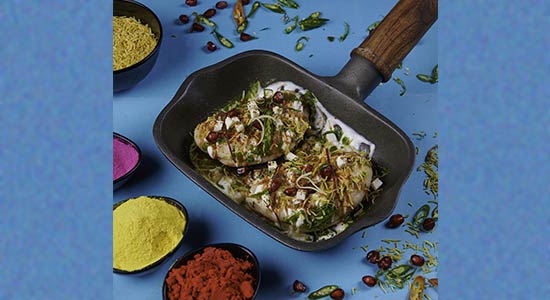
Commenting on the same, Chef Francis Vaz, Chef de Cuisine, The Westin Mumbai Garden City shared, “Indulge in heavenly desserts like Mewe mawe ka Gujiya which is laden with nuts like almonds, cashews and nutmeg, coconut and is fried in ghee to give it a scrumptious taste as well as treat customers with healthy sweet.”
Not only dahi based gujiya but fruit and nut based gujiya is also a major platter this holi at some of the restaurants this season.

Amit Kumar, Executive Sous Chef of Jaypee Greens Golf & Spa Resort has used Chironji, Coconut powder, Khoya, Saffron, Pista, Cardamom and raisins to make gujiya more healthier this season. Chironji seed is often used as an ayurvedic product which is highly beneficial for health and stomach.
Other offerings
“Friends and families would gather to eat the festival delicacies, such as at my home, where the fruit-based malpua was a huge hit. “My mom and grandmom would use bananas and suji to make it. There was very little maida. And they would vary it, based on what people wanted — sometimes adding sultanas, sometimes apples. Today, I am serving my guests at the Dhansoo Cafe the age old recipe from my mom and grandmom: Holi Special Malpua. This Malpua is a healthier version of the desi malpua. It doesn't have any sugar and is made with honey, semolina, banana and saffron,” said Chef Ashish Singh of Dhansoo Café.
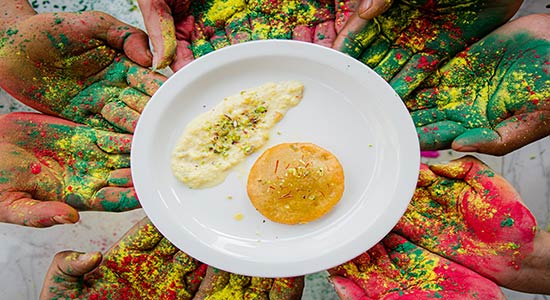
Similarly, Chef Eliyaz Mohammed, Chef de Cuisine, JW Marriott Hotel Bangalore has a special dish to offer there, which is Beetroot and Chestnut Risotto. “Today Beetroot is being used in many dishes to make it look attractive and healthy. This Risotto has water chestnuts which is vital for hydration and which makes this dish healthier,” he pointed.
With Inputs from Kritika Agarwal

It would be safe to say that restaurants have passed the stage of gymic and drama in food and are more focused on real food today. Not only this restaurateurs and chefs also feel that today the food experience is delivered by being honest to the diners, true and kind to the nature, focusing on complete wellness and not just health through food, and being clean and fair in terms of food safety and food hygiene. And, hence menu designing has become an integral part of restaurant business. Restaurants, big or small, these days are coming up with chef special menu and chef recommended menu. This is also known as the ‘eye magnets’.
ALSO READ: The Art of Innovation in Menu Designing
As customer also like attention he is also on the lookout what the chef recommends. Meanwhile, adding descriptions to the dishes is also helpful while designing your restaurant’s menu. Also, a bit of trend can also add your menu sustain for longer in this fast evolving food business.
Feedback is important: While designing your restaurant’s menu always listen to your customer. You can do a survey on what your customer like and what he dislikes. This will be very helpful while designing a new menu. “We listen to our guests a lot. For instance, we had a lot of guests asking for better vegetarian options. Hence, the menu now has a reasonably wide variety of vegetarian options,” shared Irfan Pabaney, Country Head, SodaBottleOpenerWala.
Chef’s Recommendation is Good: People always look out for some special dish in the menu or chefs recommendation or vision on certain food items. You can suggest your guests on such items on the menu. “For the most part, it's about gut and experience. It has to be about the chef and his vision, but within a certain set of parameters,” added Pabaney.
Healthiness is the Card: Nutrition and healthiness in the food is very impoartnat today. Customers these days are not just settling for fancy foods but they want to know the source of these food items and where does it come from. They are equally aware about its impact on society and environment. Hence, they are looking out for more sustainable products. “Currently nutrition, wellness and sustainability are the three key factors in my mind while I am making a menu,” said Sabyasachi Gorai, Chef and Owner at Lavaash by Saby.
Regional, Seasonal is Trending: Regional food has always made news and people have always chosen food according to their taste and region. One may eat or try some new cuisine but at the end they would return to their own ‘Ghar ka Khana’. Hence, even restaurants like Indian Accent is focusing a lot on regional and local produce. “Our menu is based on regional, seasonal and local availability with lots of modern twist,” said Manish Mehrotra, Corporate Chef , Indian Accent.

Two of Mumbai’s renowned restaurants under SquareMeal Foods — Mirchi and Mime & Madeira and Mime have now launched their new menu. Customers can now enjoy their drinks with side dishes like Prawns Alla Piastra, Laksa Curry, Nasi Goreng, Oven Roasted Gol Mirchi Tikka, and Exotic Vegetable Risotto, to name a few.
Squaremeal Foods was founded by Shishir Gorle and Raja Sekhar Reddy in 2014, with a vision to provide employment to 500 hearing and speech-impaired individuals and provide them with a sustainable and respectable livelihood by opening 20 restaurants across the country. They launched Mirchi and Mime, a dine in restaurant serving Modern-Indian cuisine is served exclusively by speech and hearing-impaired service staff.
The restaurant offers seasonal and selects classical dishes from regions across India with contemporary expression presented by a highly experienced kitchen team. Good food is being served quietly here. Madeira and Mime, the next venture was opened in 2016. Squaremeal Foods is now slowly expanding into other cities in the country.
These two restaurants which have employed speech and hearing impaired servers are focused on changing the perspective of patrons towards these individuals, while providing them with an independent and better life.
These competitively priced pubs have come up with almost 30 new dishes in the new menu. Also, customers can beat their weekday blues at Madeira and Mime as they have introduced Unplugged Nights on Monday and Tuesday. The restaurants, under the parent company SquareMeal Foods, have recently winged out their offerings in Indore with the launch of Mirchi and Mime in the city.
Commenting on this, Shishir Gorle and Raja Sekhar Reddy, Founders at SquareMeal Foods said, “We have always believed in serving the best quality to our valued customers. We focus on providing both, a fine dine restaurant as well as a neighbourhood pub experience. Our food and exceptional services, provided by our SHI individuals has brought half a million customers to our restaurants. A restaurant is always about a unique experience, wherein customers get the best quality food and beverages that will make them want to come frequently. We truly believe in creating a space where they can enjoy themselves, and avail unique and immersive experiences. We look forward to continue giving our customers, such enriching experiences and retain long-term loyalty.”
Mirchi and Mime follows a philosophy to provide a platform for SHIs to be an active part of the community, and to provide avenues for employment. Its menu comes with depictions of the Indian Sign Language (ISL) through which you can communicate with the staff. Following the official ISL, Mirchi and Mime committed to staying true to its policy of Reverse Inclusion, which means including individuals into an environment dominated by SHIs.
Also read
https://www.restaurantindia.in/article/la-piazza-launches-a-new-menu-with-the-completion-of-its-silver-jublee.13485
https://www.restaurantindia.in/article/here-are-some-restaurants-which-will-warm-you-up-with-their-new-winter-menu.13483
https://www.restaurantindia.in/article/copper-chimney-s-flagship-restaurant-in-worli-is-back-with-its-classic-menu.13447

There are lots of recipes and cuisines we have that has not been documented. They have been standardized that creates confusion in the mind about what is an Indian food. We need to do a research, standardization of our cuisine which can be authenticated by the culinary institute. There is no denying that our chefs are doing a great job in promoting Indian cuisine but something strong has to be done to keep that legacy going. Here are few pointers chefs and experts believe can help sustain our cultural diversity and cuisine.
Relationship between a chef and a Supplier: Right now the challenge is to bring the supplier closer to the customer. How would your customer know that who is the supplier and from where does our produce is coming from? It’s not from a cold storage and has been stored for months etc. It’s fresh, healthy and as much chemical free as possible. “I talk to the farmers, producers and try not to have any middlemen. It is very interesting to be a seasonal, ingredient based restaurant and not a cuisine based restaurant,” shared Vanshika Bhatia, Head Chef & Co-Founder, Together at 12th.
Adding New Ingredients: Ingredients have been our life and we have been learning so much from our ingredients. We are always keen on learning new techniques, flavours and textures by making it more interesting. There are lots of challenges that come in between on how to change those ingredients into culinary gastronomy and give that experience. “I believe that one should have fun with the ingredients. You should always play with the ingredients but do not create any confusion. Simple and consistent is what we should aim for,” said Nishant Choubey, Corporate Chef- Senian Group and Consultant Chef- Indus Bangkok.
Sustainable Eating: We see lots of people are travelling abroad, most of the time they are out of the home wherein they didn’t get home cooked meals. And, that’s the need of the hour that people should eat healthy. “I feel that’s when the role of a chef comes in to create healthy, nutritious and sustainable food,” pointed Avanish Jain, Executive Chef, Radisson Blu Faridabad by adding that procurement of ingredients is very important to produce healthy food.
Drawing Familiarities among Cultures: “I always believe in knowing the cultures. In India we have very different cultures with change in region. So, knowing cultures and familiarities will help present your guest with different types of cuisine and food,” said Sanjay Agrawal, Founder, Partner & Executive Chef, Salad Chef who added that we have been recognized by the food we eat in our daily diet. Food has an integral connection with our culture.
Menu Designing Hack: “While designing a menu we should always keep in mind that the design should express the brand personality. It should focus on the overall operation of the restaurant or eatery for which the menu has been designed,” added Ashish Khanduri, Executive Chef, Elior India. It should take care of the profitability; budget and most importantly leave a lasting impression on the guests. According to a research it is believed that most of the guests just flip the pages when going through a menu. Hence, it is important to bold mark, highlight the dish in the menu.

It is rightly said that the more you travel, the more you learn. Travel has so much to teach, whether it relates to culture, architecture, heritage, traditions or food, and one constantly gets to explore a wide variety of things. And that is one reason why chefs nowadays are travelling more in order to lend as much variety as possible to their menus. That’s what Chef Akansha Dean experienced when she went to Singapore recently and tried Tian Tian Hainanese Chicken Rice, a local delicacy. She liked it so much that she introduced it to the menu of Imperfecto Shor Cafe. Hainanese Chicken, which is the national dish of Singapore, is a special culinary recipe that is a leftover from immigrants who came from China’s Hainan province.
Narrating the experience she had there, Dean says “It’s been a month since I got back from Singapore and of course I have been missing the street food a lot. And among that what I miss the most is the Hainanese Chicken Rice! Stalls serving Tian Tian Hainanese Chicken Rice at the Maxwell Hawker Centre in Chinatown attract the largest number of people with tourists especially making it a point to try it out. I loved the fact that it was warm, fluffy and aromatic at the same time. With the addition of chilli sauce, it makes for an amazing dish.”
Commenting on the history of the dish, she adds, “When the Hainanese left their innate villages on the sultry island of Hainan little did they know they would make a permanent gastronomic mark in Singapore. It is food fit for the gods. Interestingly, chicken rice in Hainan is not served with chilli sauce, and it’s this enthused addition that has made an ordinary dish extremely magical. And then the inevitable happened. I introduced it on my menu at Shor Cafe as dish of the month and hoped people would like it as much as I do!”
Nevertheless, this is just one example. Restaurant India earlier wrote about Chef Abhishek Gupta’s attempt to give local dishes a global look and how his travels influence the dishes he curates. Gupta has travelled to around 15 odd countries and whether it is Italy or Japan, he has always tried to learn and gain experience from different culinary practices and has built up something new from the local ingredients available in the country. “Travelling for me is only to learn from various places and people, and then come back not to replicate something but to create something new, which is not only very Indian but is also accepted by a global diner,” he says. He is a member of Epic, a pop-up dining experience serving ‘experimental cuisine’ at Leela, where they have created more than 320+ innovative dishes.
“This restaurant is more about experimental cuisine, majorly working with a lot of Indian flavours. It is an integration of global experience with local flavours by using local ingredients,” Gupta says. Meanwhile, Together at 12th, an experiential fine dining restaurant, along with the famous Nadodi Restaurant of Malaysia, showcased their authentic nine-course meal to let diners experience a transformative gastronomic journey. Both the restaurants curated dishes which were an amalgamation of Indian and nomad South Indian cuisine. Nadodi Restaurant, which is well known for its ‘nomad South Indian cuisine’, uses flavours and ingredients that South Indians contributed to the region’s culinary diversity when they were settling in the Malay Peninsula and Singapore.

The sound of rain’s pitter patter which comes as a respite from the sweltering heat automatically put human beings to crave for deep fried pakodas and Kadak chai. No wonder the cold breeze and that earthy sweet scent makes us feel the weather and put us on no-work mode immediately and that is the reason why restaurants across the country are customizing their menu to let customers enjoy the most out of this monsoon season.
Whether it’s a rooftop café or a café with wide-angle view of outside weather, it is always a delight to have soulful bites at a cozy nook overlooking the rain. “People crave for chatpata items in monsoon, and there is nothing that gives more joy during the monsoon season than chaat & pakodas, shares Chef Anahita N. Dhondy, Chef-Partner at SodaBottleOpenerWala Cyber Hub, Gurgaon says who has added a menu called ‘Chaat Pakoda and Chill’ this season that has sumptuous range of pakodas such as Marcha Na Cheese Poppers, Mangalorean Prawns, Coconut Fritters, 3 Daal ka Bhajiya, and CCP – Chutney Paneer Pakoda to name a few.
However, if you think this is it, then you are wrong because they also have quite a range of chatpata chaats as well which includes Palak Patta Pakoda Chaat, Teen Batti Dahi Batata Puri, Ragda and Shakarkandi ki Chaat along with SBOW special Dabeli and Juhu Chowpatty PaniPuri.
“There's something in the air every year in July & August that makes Indians crave the indigenous deep-fried delights called pakodas. It doesn't matter if it's a drizzle or pouring rain, that single drop of water splashing on dry ground just makes our hearts scream out for a large plate of pakoras,” says Chef Raju Massey at Nukkadwala by adding that it does not matter if the pakoda we love most is made of potatoes, Onion, spinach, chillies or chicken. We Indians have this amazing concept of high tea, or shaam ki chai, which is quite bland without steaming hot pakoras.
To give as many varieties of chai and crispy fritters the menu at Nukkadwala includes paneer pakoda, Nukkad pakoda with an assortment of Chai flavours like Nukkad Chai, Filter Kaapi, Nukkad Chai Flask and the aromatic Tulsi Green Tea.
Meanwhile at the Decode Air Bar, Chef Ramesh Rana serves Dhokla chaat by giving the mainstream dhokla a twist. Apart from this there are Old Delhi Aloo Tikki, Desi Latpata Tawa Sausage, Lawa Stone ke kabab (they use real lawa stone to make these unique kebabs), Cheese Chilli Bread Pakoda and Chilli Soya Patties. The price of the monsoon menu here is in the range of Rs95 to Rs 395.

Experience is something that a person feels, where he can connect on whatever is being served to you. It is a normal human tendency that demands more and that means you have to always serve something special at the table. The very concept of eating at the table is constantly evolving. As chefs are constantly trying and figuring out what is relevant, the need of hour, the future and how do they balance these trends and fulfill the social needs of their customer.
“Whatever we put on plate has all the essential elements of being on the menu. Customer is king in the market and he evolves the food and what is being put on the plate. It is also about whether the server is knowledgeable about the food being served, is it served in the right context, is the ambience perfect, is it great value for money etc,” shared Rahul Dhavale, Executive Chef, Westin Mumbai by adding that unless and until you don’t take all these in the right boxes the customer is going to be eating at your competitor.
The restaurant owners and chefs have to be very careful by making sure that they are keeping these kind of things in sink and are continuously evolving as an industry. “I make sure that we always follow the current same trend. People these days are very conscious about what they are eating and what goes into their stomach. We have taken care of it and the food is being plated in such a way that people find it appealing to try,” added Aishwarya Bhende of AB Celestial who took almost 3 years to setup AB Celestial. “We looked at every single detail. You really need to bring something different on the table because when people step out they not only go to eat out but for an overall experience. When we started we not only looked at plating but cutlery, crockery but even the interiors because we were on a boat and I want to sink it with everything from cocktails to menu to ambience,” she further pointed.
Meanwhile, experience is also about how hygienic is the food and how well it is being presented in front of the guest. Commenting on the same Altamash Patel, Executive Chef, The Park, Mumbai shared, “Cooking in flight kitchen and restaurant is very different. If anything goes wrong at the restaurant front it can be rectified by giving a service recovery but in-flight catering you prepare in bathes and your customer is travelling. So, if something goes wrong there is no scope of service recovery.”

Along the years of growing up, when Noida seemed like a barren playground to indulge in, Reverb disc surfaced up as the miraculous hub for all the youths to gather together to savor an ultimate nightlife experience as well as being a part of diverse Extravaganzas, ranging from never ending day jam sessions to multiple corporate events.

The restaurant has always come across as an absolute package to the Noida circuit of people. Being packed with people from different age groups throughout the day and night, it used to be the prime junction of interest. So, here comes yet another edition of the same, Reverb 2.0 to have you reminiscent about the good old times that you have spent, rambling inside this place which you once called, home.

Reverb Cookhouse & bar is the latest release of a luxurious diner & bar situated at the GIP mall, Noida. The place is oriented with the concept of palm trees, brimming the whole space. The thought behind the idea of the green leafy décor is to be in a close connect with nature.
As, you enter through the doors of Reverb, you will witness the hand painted ornate walls, in different shades of green with a huge projector placed on the left wall, displaying a myriad of music videos throughout the day. The next thing that will seize your interest is the magnificent bar, displaying a grand collection of liquor for all of you to quench your thirsty pleasures. The seating space on the ground floor, which is divided into two sections, looks opulent with teal green and red sofas with pam printed pendent lamps in each corner, enlightening the entire place.

One lies on the right of the entrance while the second can be accessed with the spiral stairs which leads to the section on the top. With the lights faintly dimmed in the chandeliers dropping from the ceiling, adorned with aesthetic artificial grasses and the beautiful music playing in the background, Reverb is the perfect venue to sit down and savour your share of composed conversations with your loves ones or your deal of important corporate meetings.

Before you reach out to the rooftop, there stands the console for our resident DJ at the junction of the stairs to keep you upbeat with music throughout your sweet time at Reverb. As you forward upstairs through the hallway, you will arrive at the three different sections of the sitting alignment which comprises of two uplifted areas while the middle one set on a low line, facing the charismatic bar furnished with the liquor of your choice. The prime console is set on the right side of the entrance to the rooftop which is constructed to organize live fiestas and to showcase talented artists, performing their art at their best. With the soulful ambiance around, the rooftop at Reverb will you be your ideal spot to get away from the hustles of the city.

The last and most crucial element of this place is the plethora of the dining course that we offer. Our extensive food menu is abundantly laid out with different world cuisines ranging from Mexican, Indian to Chinese and Italian, to please your palate with the best culinary revelation. So, here’s your destination, when you walk by, halt at Reverb Rooftop Cookhouse & bar to encounter a magical affair of some sumptuous food in mélange with a solitary yet exuberant environment at your best service.

Traditionally, soups across India are consumed in the form of shorbas in the north, saars in the west, a big influence of Chinese style soups in the east and lentil soups like the rasams and Mulligatawny in the south. The primary ingredients in traditional cooking include a lot of grains, spices, bone broths and vegetables, which we seem to be getting back to with a lot of innovation today.
Must Read: Ramen, An Evolution Of Model Soup Phenomenon
Thanks to the disposable incomes of people in most tier-I and tier-II cities and experimenting taste buds, consumers are open to venturing out more and experiencing new things. Today’s consumer is far more aware and well-travelled, which in turn gives chefs more scope for innovation and additions to their menus. The cuisine barriers are somewhat broken and chefs have started infusing ingredients from different countries, cuisines and styles to suit the palates of the new-age diners.
Also Read: Deliciously Organic!
Soups are the flavour of the season and we love winters for that! There are four major categories of soups that are in vogue at the restaurants in India:
The Soup Meals

Sakura Wood Smoked Pumpkin soup
If you like your soups thick and creamy, Chef Ruchira Hoon, Bakery Partner and Chef - The Piano Man, won’t make it for you. Yes, you heard that right. She won’t!
Meat soups with bone broth are what she likes to work with and she feels that the best style to stick to soups is the pan-Asian. Chef Ruchira’s favourite is the Dashii stock and she believes that all soups are meals in their own right. She uses a lot of local produce and meat stocks in her soups, which are flavourful and wholesome. One would find a lot of fresh vegetables, a variety of mushrooms and vermicelli in her preparations and she doesn’t like an overdose of spice.
Click To Read: These Restaurants Are Breaking The Mental Block With Vegan Diet
Ruchira also likes to use grains like barley in her soups and does amazing combinations of two-ingredient soups like pumpkin and coconut, etc.
The Asian Broth and Traditional Soups
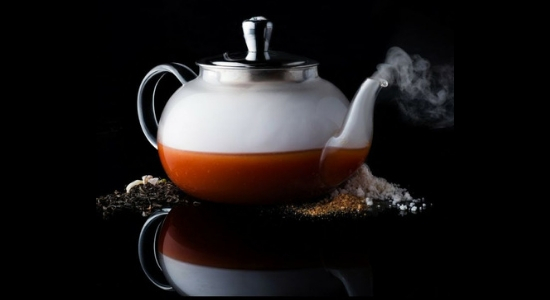
Tomato Jasmine Soup
Even today, traditional soups remain favourites for many, like the sweet corn soup, manchow soup, tomato soup, clear soup with vegetables, and so on. However, with more and more people becoming world travellers, they are looking for international soups like minestrone, French onion or miso soup as well.
Various cuisines serve the best of the soups in their regions in different forms, which can be had in mornings or evenings.
Also Read: 4 Beverages Trend Shaking Up Bar Menu In 2019
Chef Vaibhav Bhargava, Corporate Chef, Yuvi hospitality – Molecule Air n Bar and The Drunken Botanist, personally loves to work with yuzu juice, garlic and truffle oil. “We have incorporated a tea, truffle and tomato soup together called truffle infused tomato jasmine tea, which was really appreciated with our customers at our restaurants.”
Many countries serve soups where they can be had as breakfast or lunch or dinner time. For example, the miso soup in Japan is a staple in breakfast. Lunches are mostly heavier and people prefer to have soups as a whole meal which includes vegetables, proteins or noodles in it so that they feel full and light at the same time, like the Vietnamese PHO, hot ramen noodle soups and hot pots.
Chef Vaibhav feels that dinners are less preferable for soups as people are drinking more beverages as compared to soups.
Grains in Domination
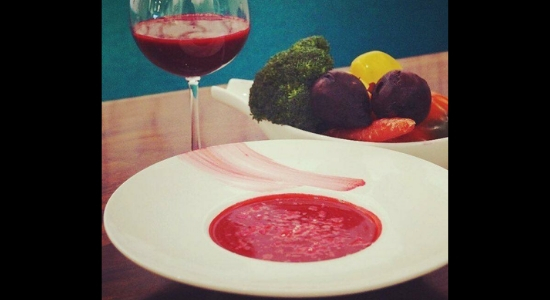
Coconut and Beetroot Soup
According to Chef Tarun Sibal, Owner, One Fine Meal, and Partner at Café Stay Awoke, as far as soups are concerned, the Oriental style pots and the European style purée soups work the best. And the consumers are more likely to favour this style when it comes to Potage. The other interesting category is the meal bowl soups consisting of broth, protein, starch and seasonal vegetables.
“Ingredients for me need to be seasonal, local produce to get the best from the bowl I create. Fresh peas will taste absolutely brilliant when available in the winters in Delhi compared to the frozen ones which are available all year. Beetroot has been my favourite this season and the combination of beets with fresh coconut cream has been the stellar combination with a hint of black pepper,” says Chef Tarun.
“Course-wise meals have become out-dated, as have the portions sizes of mains. Today, it is more about tasting menus, tapas, smaller portions and a lot of variety.”
~ Chef Tarun Sibal
The Chef feels that consumers’ tastes have changed, indeed. Abundant availability of produce locally and the know-how of its usage are two main reasons behind this shift, be it avocados, quinoa, barley or chia.
“Pairing is more art than science. The way Black-on-Black works, similarly White and Black also is a combination. With food, some combinations work because they are a match made in heaven and some work on the concept of contrast,” says Chef Tarun.
Two-Ingredient Soups
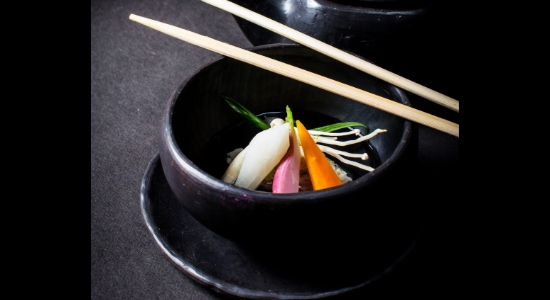
Chicken Suimono Soup
Chef Vikram Khatri, Business Head & Head Chef Guppy & Poke Bar, Delhi and Hello Guppy in Mumbai, feels that Delhi normally has fermented Soybeans soup (Miso) in Bonito Dashii Broths, while Mumbai prefers Kelp and Shitake Mushroom soups.
Currently, in Delhi, the Ramen Noodle Soup at Guppy is flying with Delhi winters. The choice of soup primarily is Carrot, Mushroom, Rich chicken, Pork tonkotsu and seafood – all of which are perfect meals in bowls to be consumed at any time of the day. From Smoked Pumpkin to Chicken Paitan, from Carrot Gochujang to five-mushroom Suimono Clear Soup – clear soups with fresh vegetables and light broths are in all the way!
Chef Vikram feels that instead of three-course meals, what we love is the concept of the thali or bento where the choice could be more.

While key disruptive trends are impacting the food industry, with how food and cuisine changes are happening in foodservice, well-known Pastry chefs & Gourmet masters have set a benchmark with their style of cooking and thus their businesses are much scalable in the Indian market.
The food and beverage industry is undergoing change not seen in decades. Confluence of megatrends is leading to disruption and innovation that is set to change the industry and consumer choices for a long time to come. The Food Service sector globally and in India is also adapting to these trends.
These Chefs turned Foodpreneurs have observed the global and Indian industry from a unique vantage point. Read on to know more about their journey:
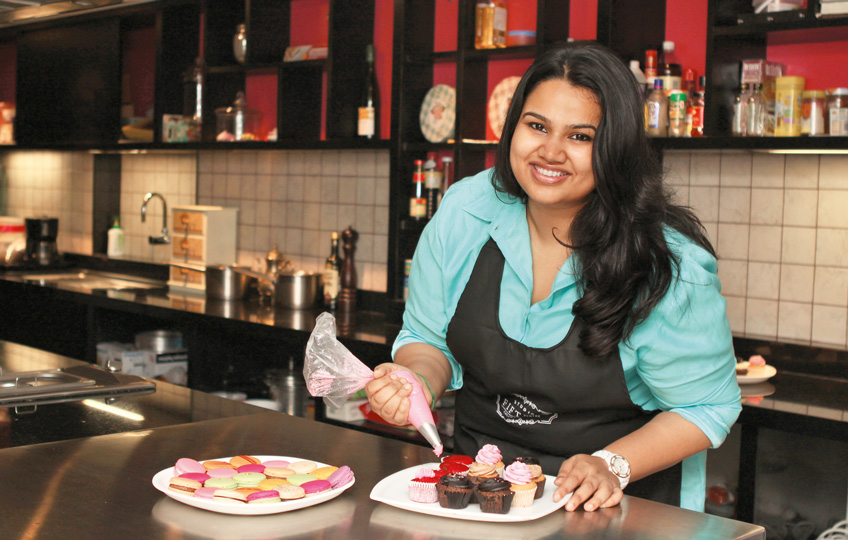
“The Baking Success”, Pooja Dhingra, Founder, Le15 Patisserie
Her obsession with desserts made her dream turn into reality and as a High-End Pastry Chef, she is the leading the Macaroon business today.
Talking about the evolution, Pooja Dhingra said,” When living in Paris, I became familiar with French pastry & desserts and realized its absence in the Indian market. It was my dream to bring my Paris experience to Mumbai.” That’s exactly what led her trademark Macaron business flourish in the niche Indian market.
When we started 8 years ago, Pooja continued,” There weren’t too many standalone pastry shops. No one did French pastry the way we are doing it today. Our branding, packaging and even our marketing stand out differently in the market.”
I think there is a great evolution where customers have become more open to trying new things. Indeed, an opportunity for Chefs and Restaurateurs to change their product line and be in this exciting place right now.
For us, Pooja added,” Consumer experience is very important. Not only from the product that they eat but also the interiors & exteriors of the store matters much. Also, much attention is paid to how every aspect of the business is consumed.” For any chef, paying attention to these details adds up the value in their business.
With Chefs like Pooja Dhingra, Le 15 Patisserie led this whole revolution and disrupted the Indian Pastry scene.
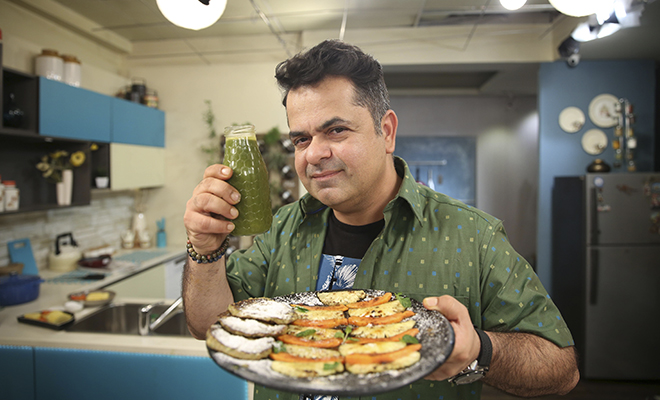
“Consumers are the King”, Vicky Ratnani, Celebrity Chef & Consultant
Talking about his journey Vicky Ratnani goes back to his cooking days abroad where the voyages were about cooking for large numbers yet for fine dine & large scale meals. It opened doors to new languages, working with 37 different nationalities, cooking a new menu every day gave me a sense of satisfaction to work with different kinds of produce.
“The more you live in India, the more Indian you get”, said Celebrity Chef Vicky Ratnani and that’s exactly what brought him back in this space and elevate his experiences in the Indian Market. He continued by saying,” In this interesting journey, you will find yourself adapting your international exposure and sharing it at the same time with local people. Likewise, working with farmers, with the seasons has been an integral part of my life.”
One of the first Chefs in Television, Vicky taught beyond local ingredients and educated the audiences with his unique and simple cooking methods. Vicky exclaims,” It’s been a journey of learning, experience, restauranting and communicating with people on a different bandwidth.
Commenting on the much-awaited disruption he said,” Disruption made the Indian food much more popular in different countries. The depth at which people are getting hyper-local, working with sustainability and clean eating, has gained a wider acceptance in comparison to the past.”

Chef Gautam Chaudhry represents the exclusive group of creative chefs who pioneered the trend of Progressive Indian Cuisine. Having started his career with the Radisson Group, Chef Gautam went on to work with The Oberoi's. He was instrumental in launching three sixty degrees at The Oberoi's New Delhi, before heading to Tanzore Restaurant & Lounge in the very glamorous Beverly Hills, USA. He came back to India and rejoined the Radisson Group briefly. He followed this with a long and successful stint with the Hyatt Group through their Hyderabad, Bengaluru and Pune properties. Chef Gautam launched a luxury catering company by the name of Gourmet Aura, for which he received the prestigious Most Promising Entrepreneurs Award in the field of Food & Beverage by The Economic Times in 2015. Most recently, Chef Gautam added yet another feather to his cap by being listed as one of India's Top 10 Chefs by Hotelier India. Today, he operates a company in Dubai by the name of Giant Foods LLC and owns Demiurgic Hospitality Pvt. Ltd.
How do you define experience?
Experience is about nurturing each and every touch point. Generally, when people speak to a chef and they talk about experience, the only thing that comes to the mind is ’food’. But on the other way round, that is not an experience, only a recipe can’t create that spark. Food is the most important element but only a part of experience. There are various vital touching points and they start right from the customer walking in the restaurant placing the order and so on. The whole process is about creating an unforgettable experience.
How do you create that spark among your guest?
First impression is the last impression. Greeting a guest with the best manner possible is the first step to build that spark. Hospitality is all about service and host must look for even minute things i.e., what kind of water is being served when a customer is seated, the ambience etc. All these pretty little things are the part of experience.
What kind of experience do you create at your restaurant?
There is a restaurant which I have launched in Beverly Hills named Tanzore. We started to create an experience by the ambience. The theme of the restaurant has to blend well with the food. Each and every employee of the team has to speak the same language because all that accounts in experience. If we talk about food industry, there is way too much scope. Chefs are trying to add anything and everything on the plate in the name of creativity but it should make a logical sense between the concept that you are offering to the customer and your thought process. It is the need of the hour that chefs should focus on giving quality products because they have lots of responsibilities on their shoulders. Health and taste has to go hand in hand.
What do you think is the new menu evolving in food industry?
I feel there are varieties of trends and healthy food is one of those. People today are forgetting the definition of healthy food. There is lots of Indian stuff out in the market which can be considered healthy. For example, ghee is taken as an unhealthy ingredient by most of the people but it is healthy if used properly.

Chef Neeraj always like eating and is a great foodie. As a child he would draw and paint canvasses. And has never dreamt to be a chef during his school days, probably because it was never so hyped or revealed the way it is today. But his inclination towards art made him do so. “Someone who had seen me grow with passion for cooking suggested me to take up Hotel Management. Only when I landed up there,” shares Chef Neeraj realising that this is what he was seeking for. Chef Neeraj likesrustic style of cooking and presentation wherein you don’t mess up too much with the original flavour of the ingredients. Believing in simple and fresh, he loves cooking Pan Asian food especially Thai. Here are excerpts from the interview:
What all things come along in designing your restaurant menu?
Lots of planning goes into designing a good, balanced menu. As it should be fresh, relevant – crisp, easy to read and understand and of course should be profitable which the crux of you being in the business is. It starts with a SWOT analysis, where you figure out your strengths, weaknesses, opportunities and threats in alignment with your market or competition. You need to understand the Market segment you want to target – age group, nationality, corporate or social mix etc. Once you have set your targets or goals, you start writing a menu. Availability of ingredients and right equipment to produce them should be there at the back of your mind while framing your menu.The items should be written in a logical pattern and print size to be apt which doesn’t puts off a reader.
What menu tweaks are you planning to introduce to stand out from the crowd?
We have decided to print all our menus inhouse which are going to be short, crisp and fresh making it feasible to change every quarter inorder to incorporate fresh produce.
All menus to have gluten free, healthy and kid option. We are going more local and organic. We are also trying to incorporate regional, snack food as most of the Indian guests like snacking.
Tell us something about the supply chain management in your hotel. Who are the suppliers? Can you name some?
With big establishment like ours, we deal with small as well as big suppliers. Large houses support us with bulk products and small farmers help us with fresh, organic, local produce to be used in speciality restaurants and salad production. India is still nascent in supply chain management system and is treading towards betterment.
Comment something on the involvement of senses in the restaurant?
Senses play a very important role in a restaurant. There’s nothing better than the smell of freshly brewed coffee, freshly baked croissant or a waffle in a breakfast restaurant. What you see, what you hear, what you smell or touch prepares you for the experience you are there for. Many of the top Michelin star restaurants are using the senses to enhance the experience, one being Ultraviolet by Cher Paul Pairet who theatrically uses sound, smell and visuals with every course.
What are the different types of cuisines served at your restaurant?
Indian, Italian, Japanese, Middle East, Greek, Western, Thai, Chinese and other South West Asian cuisines.
With recent announcement of service tax discretion. How do you feel it will affect the biz like yours?
Any change brings in bit of anxiety. Though banqueting becomes cheaper, you end up paying more if you dine in a 5 star hotel restaurant. I don’t think it will effect much as someone who comes to dine in our restaurants will come to us irrespective of change of taxes. Cigarettes have become expensive over the years but the sales have not gone down. Similarly, guests will get used to the new tax system and it will become a part and parcel of their life.
How familiar are you with the legalities involved in opening a restaurant? Are you planning to open your own restaurant?
I have no intention to open up a restaurant as of now, though I nurture a dream to do so in future. I feel India is not an easy place to do so which has a political and bureaucratic infrastructure. With the development of New India, my perception might change. I will learn the legalities, which I am aware of the basics, the day you take a plunge in it.

Chef Shipra Khanna started working in the kitchen when she was nine. It was her love for food and passion that made her enter into Master Chef in 2012 where her family and friends supported her to showcase her talent on the show. In an interview to Restaurant India, she shares how cooking has changed her life in last few years.
Joining the entrepreneurship bandwagon
There were so many acknowledgements and achievements including working with different chefs, doing varieties of menu and learning from others. I believe that nobody knows it all, the more you explore cultures and human beings, the more you understand the human cycle as people have varied options. In entrepreneurship you need to open to talk to people because then you understand the human angle and you interact with all sources of people. Masterchef definitely gave me a platform to give my passion a profession but it doesn’t end anywhere it is always like what do I do next?
Cooking stint
I started cooking at the early age of nine. I started learning from my grandmother but the true stint begins when I had to cook for my daughter. I started cooking outside food at home keeping health and taste at one time. It was in way back 2004. Masterchef happened after 8 years in 2012.
Shining with opportunities
After winning Masterchef I started working with different tourism board as chef. I started doing consultation for restaurants, private dinners etc. It all started with Masterchef.
Overcoming challenges
I am 34 years old. Doing everything at a time is very tough. There were already many people doing well in the food industry and so I have to come out very well to match that standard. It is good to start small and then grow from there. You have to grow with people and that’s where the whole success lies.
Flying high
I am doing lots of shows on Food Food, Star Plus. I have done few international shows in the US and UAE. I have also launched by digital channel called Shipra’s Kitchen where all my work lies. I am talking about various types of cuisines, desserts and health foods on the channel. I am also the face of cooking on Tata Sky DTH. It is a lot of fun when you start cooking.
Going forward
I am planning to launch my own restaurant. I am working on around seven cookbooks. Since, starting a restaurant is tough it will another few years. My two books are already out. I always had in mind to write a book. It was about sharing my recipes and learning with people. My Four cookbooks will be regional and three will be health cookbooks.
On food trends
I love cooking and everything related to food is close to my heart. I do a lot of global food, fusion food and desserts. I don’t want to stick to a cuisine rather I want to explore everything. I am really happy to see that the food has evolved and thought process has evolved amongst diners in India. People love to eat out, they understand food, and they are accepting global changes.

A well–travelled chef with an innate understanding of culinary concepts and a strong passion for innovation, Vikas Seth comes with over two decades of work experience travelling across some of the best culinary capitals of the world.
Growth of restaurant biz
The F&B market is opening up year on year and I feel stand alone restaurants are doing really well in the market with good stake. Fine dining has also got a holistic touch in standalone environment. I can feel that everyone today is growing. If you see at the organised part of the industry it is only 30 per cent and 70 per cent is still not organised and its actually growing and I think it will move more towards organized segment soon. From past 20 years I can see a lots of food development happening, people travelling more, they are ready to spend more and there is high acceptance level amongst the crowd with new concepts and varied cuisines. People are eating out a lot and it is great signal for the food industry to do more outlets.
Creating Mexican waves
If you go in detail its very surprising. Mexican cuisine is very much familiar to the Indian cuisine. Both have a legacy and have a history rich cuisine, ingredients are plenty. There are a lot of chillies used to prepare the food which are all not spicy but obviously flavorsome. Mexican cuisine is beyond Nachos and Tacos.
On his own Restaurants
I am chef and culinary director at Lounge Hospitality. My role other than cooking include conceiving, creating anddeveloping menus, work on new ideas, teach staff and obviously the costings. It’s a lot of fun and as I am born and brought up in Amritsar I love eating and cooking good food. Almost every day you are creating something new and doing something new. It’s very challenging as well as exciting role with lots of travel which I love. I am travelling to a place called Oaxaca in Mexico soon. This place is what Punjab is to India for culinary delights. I am going to a Mexican food capital with a Mexican chef which is going to be very exciting with lots of eating out and learning more about the cuisine and culture of the place.
Why Mexican cuisine is still a challenge for people to do is because of the ingredient sourcing, can be the chillies or right masa. To get all these things there is lots of backend work that has to be done. Though, it’s always challenging to do foreign cuisines in India but as I have spent quite a few years doing it, the challenge has reduced for me. We are importing integral parts of it from Mexico and avocados we are sourcing locally.
Design that boasts
We have designed the restaurant in a way that we have a bar at the centre and on the left we have 100 cover restaurant Sancho’s and on the right we have Singkong which is 70 cover restaurant. The Mexican has a rustic look whereas Oriental has more Pan Asian feel to it. As we are present at the best location in Bengaluru, that is UB city, our mouth watering food at both the places along with great location adds up to the better footfall at both of our restaurants. We have a kitchen which is divided into two, one side is oriental and other side is Mexican and operationally it works well for us.
The crowd puller
Footfall at our restaurant ranges from 250 people on weekday to 600 people on a weekend. Since most of the females are also working in Bengaluru so they tend to eatout more as compared to other cities. It is a price sensitivemarket, so the right portion size of the dishes, to get a real value for money pricing is the key. We also work on small plates in our Mexican restaurant to make the pricing more attractive and at the same time guests can try more variety.
On growing trends
Standalone restaurants are doing well, lots of regional food is also doing well and home chefs are being recognized. People are travelling more and so awareness about foreign cuisine and lot of ingredients is growing. People are appreciating new ideas. And, today you have clientele for every product and there is room for everybody to excel. The key is the taste and marketing for sure!!!

India is at the cusp of food explosion today; global brands which have entered the Indian market are either dropping their tradition by going the ‘veggie’ way to capture the Indian market or are changing their food products according to the palate and taste of the Indians.
Wendy’s, opened its first outlet in Gurgaon last month partnering with Sierra Nevada Restaurants, which had actually initiated the talk with its global counterparts two years ago to bring the hamburger chain to India. But the brand took almost six months to decide on how to proceed further, finally signing the deal in early 2014 and establishing its first outlet at the ‘hungry’ Indian land after almost one-and-a-half years of the agreement.
The company with a tag line- ‘Quality is our recipe’ has spent over a year to develop their product ensuring that they will be suitable and relevant for the Indian customer. And it has worked out an extensive vegetarian menu to suit the Indian palate, dropping its signature ‘Beef square hamburger’ from the Indian menu. Not only this, the hamburger chain has partnered with a group of casual dining chefs to do an extensive research on the menu and not making it a ‘QSR Burger’ where the patty has come prepared rather developing and preparing the patty and the fillings freshly to give it a casual dining experience.
“Yes, I would say we have tailor-made the menu. We have engaged a culinary team which has worked with us in different capacities in our restaurants in our food businesses. It's a team of chefs who have worked with various casual dining chains,” shared Sanjay Chhabra, Director, Sierra Nevada Restaurants which holds the master franchisees of Wendy’s in India.
Not poised for throwing the number, Chhabra, who also runs restaurants like Barista Coffee Chain, Kylin and is in the process of bringing Jamie’s Italian to India by launching its first outlet in India believes their entry in the Indian market was at the correct time, Indians are now much more experienced and ready to accept a brand.
Going slow on number counts, Wendy’s will be opening over 20 outlets in first two years focusing on NCR and North India.
According to a latest research by FICCI, “Quick service industry and casual dining are the two most popular segments that form 45 per cent and 32 per cent of the overall market, respectively.”
With a view to delivering fresh and local, Wendy’s is also sourcing all its ingredients from around the country, grown in the local farms and factories.
Copyright © 2009 - 2025 Restaurant India.









